Our guided hike through the Pigeon, White, Honey, and Love Valleys was, without question, one of the most memorable parts of our trip to Cappadocia. Lasting several hours, this half-day adventure took us across dramatically different landscapes, each with its own color palette, rock formations, and stories. From the carved pigeon houses of Pigeon Valley to the pure chalk-white cliffs of White Valley, the warm golden tones of Honey Valley, and the playful silhouettes of Love Valley at sunset, the journey was a visual feast from start to finish.
The hike was led by our friend and guide, Şamil, who grew up in Cappadocia and knows its paths, history, and hidden corners like the back of his hand. We had already hiked Red and Rose Valleys with him and his loyal dog, Oscar, earlier in the trip, and that experience was so incredible that we immediately signed up for another of his tours.
This trail, while varied, is manageable for most fitness levels. There are sections with steeper inclines or uneven ground, but overall, it’s a route that rewards steady pacing and a willingness to pause often—both to catch your breath and to take in the sheer beauty all around. That said, we highly recommend doing it with a guide, as many of the paths are not clearly marked and having a local lead the way adds depth to the experience.
Starting in Pigeon Valley
Pigeon Valley earned its name from the countless pigeon houses carved into the soft volcanic rock. Historically, local farmers collected pigeon droppings to fertilize their crops, and these rock-carved homes offered a safe nesting place for the birds. Today, the sight of these tiny niches dotting the cliff faces is enchanting, especially when you catch a flurry of pigeons sweeping overhead. Most people only visit Pigeon Valley Lookout, but hiking the actual valley offers amazing up-close views.
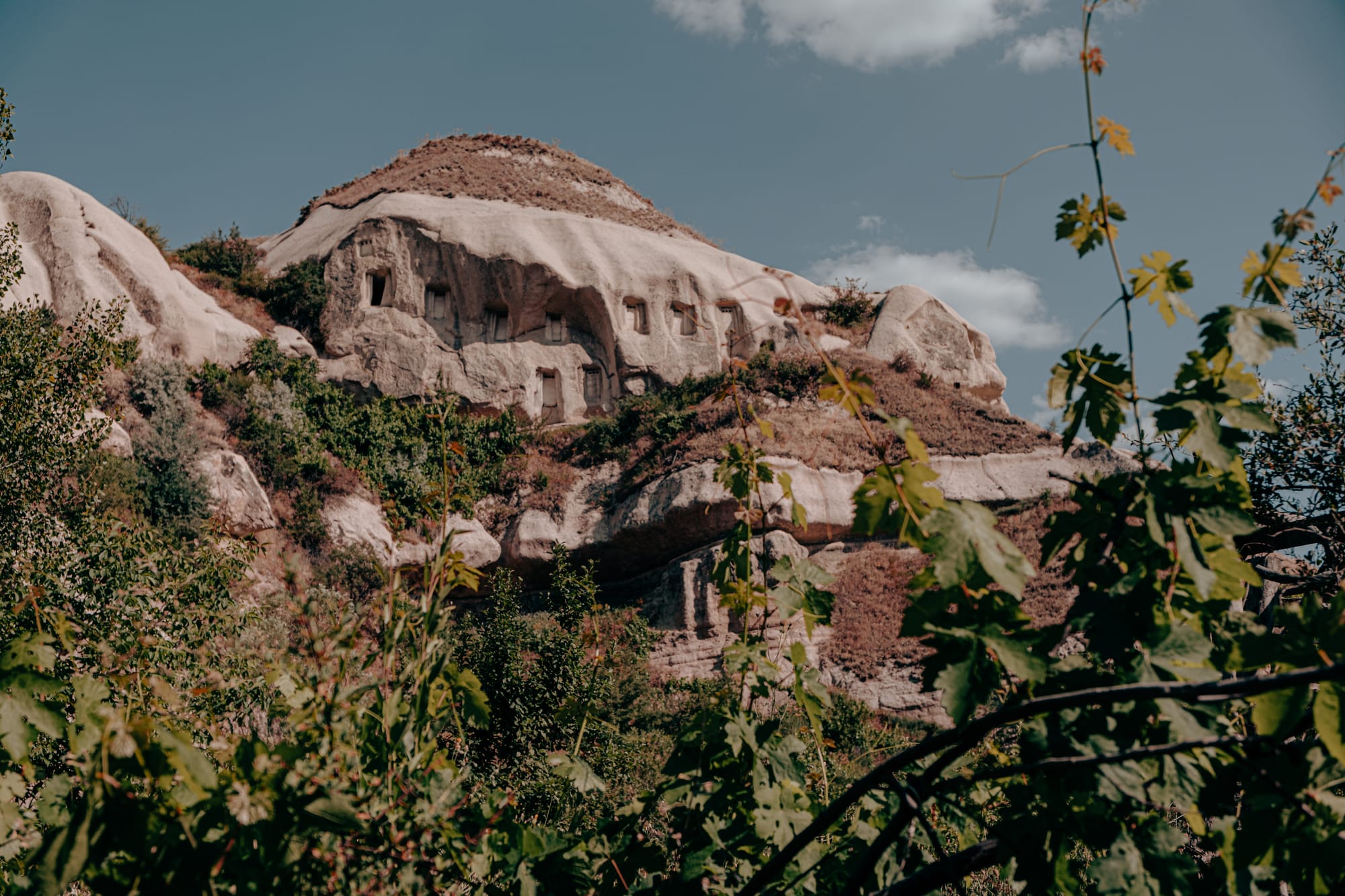
The valley itself is lush in parts, with groves of trees and winding paths shaded by foliage.
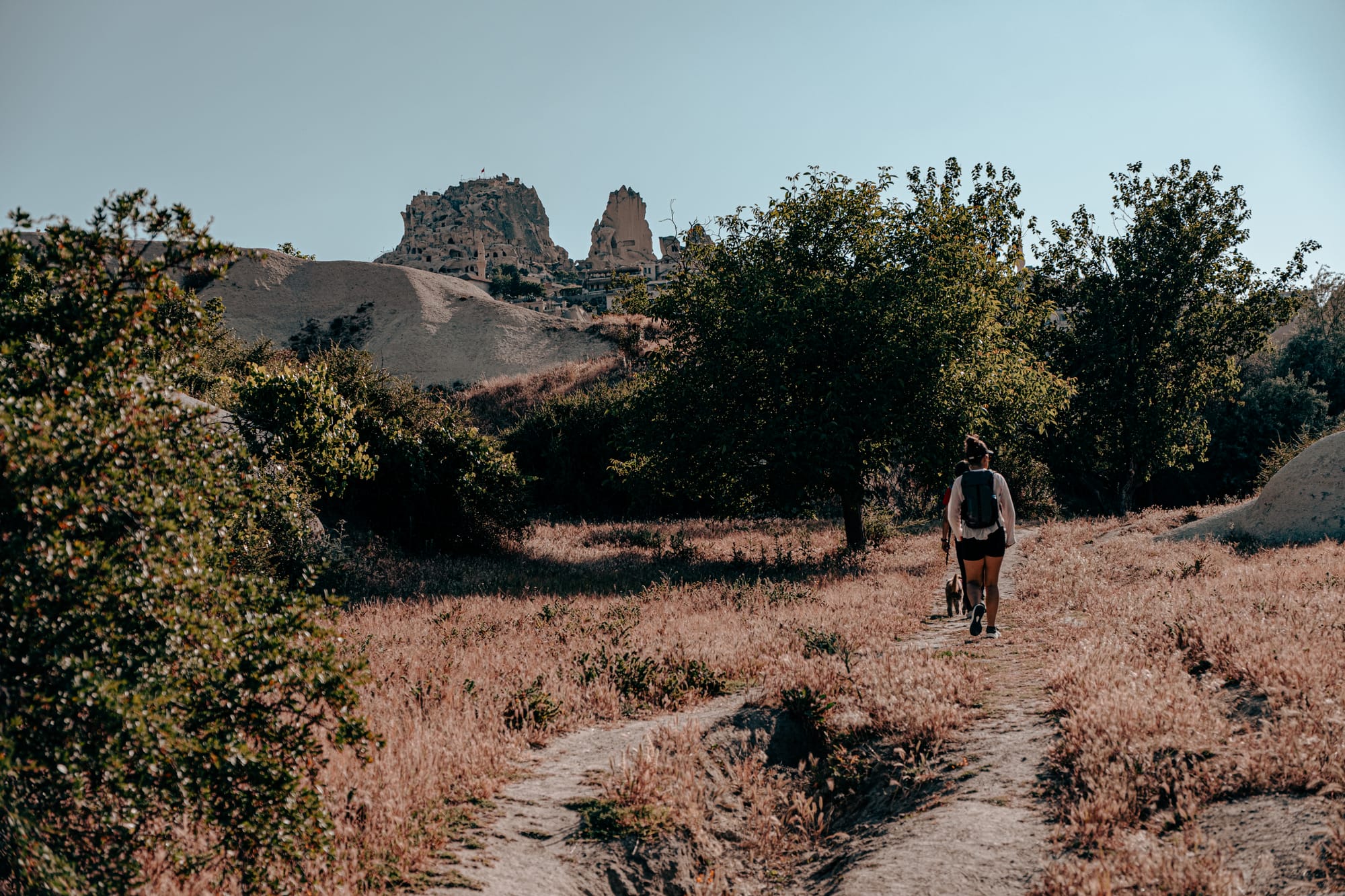
As we descended into its heart, Şamil pointed out native plants, explaining their traditional uses. Along the way, we spotted bright yellow clusters of flowers, their flat-topped blooms standing out against the dusty greens of the undergrowth. Near the path, white blooms swayed gently, their petals pristine and satiny.
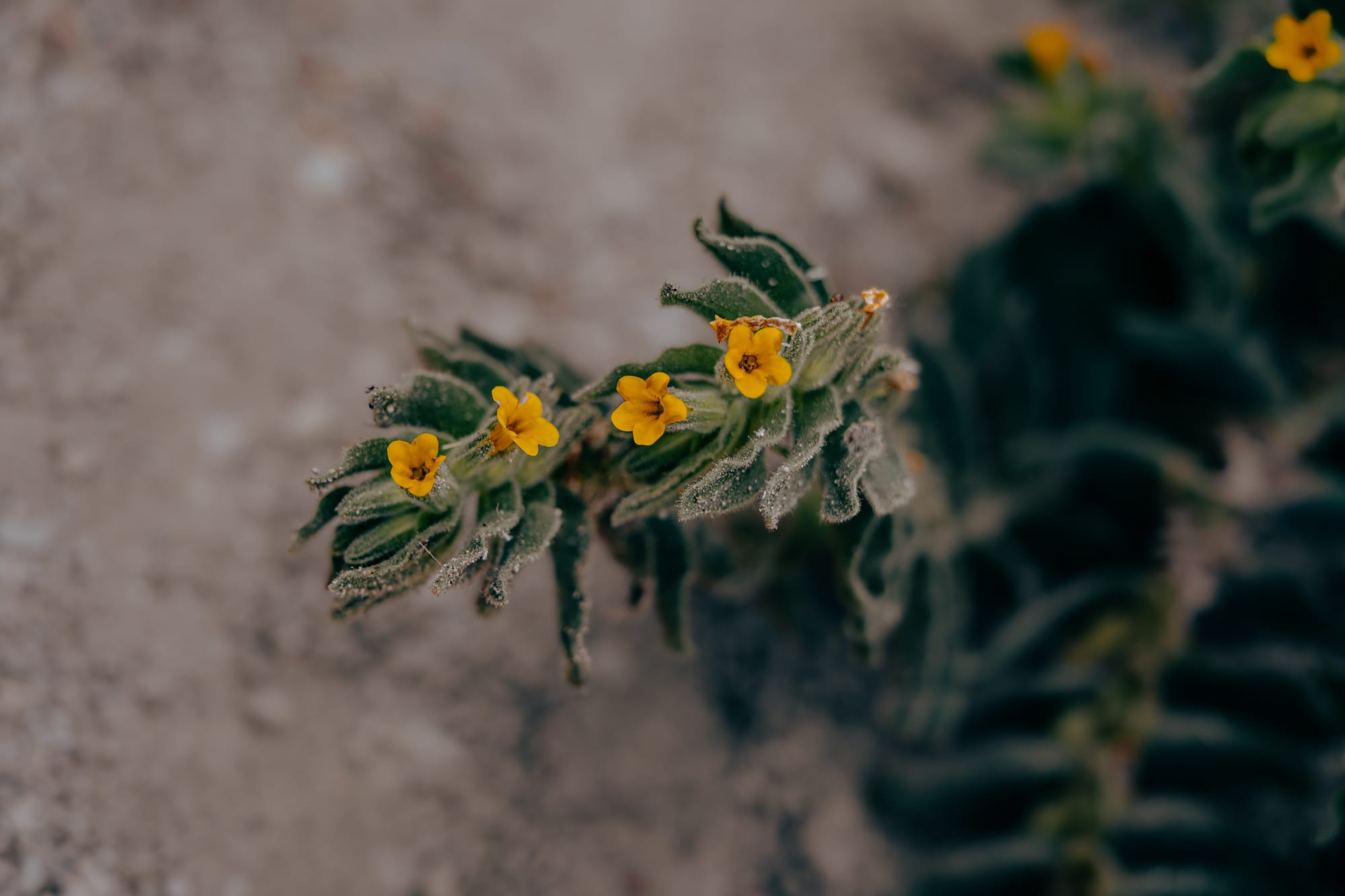
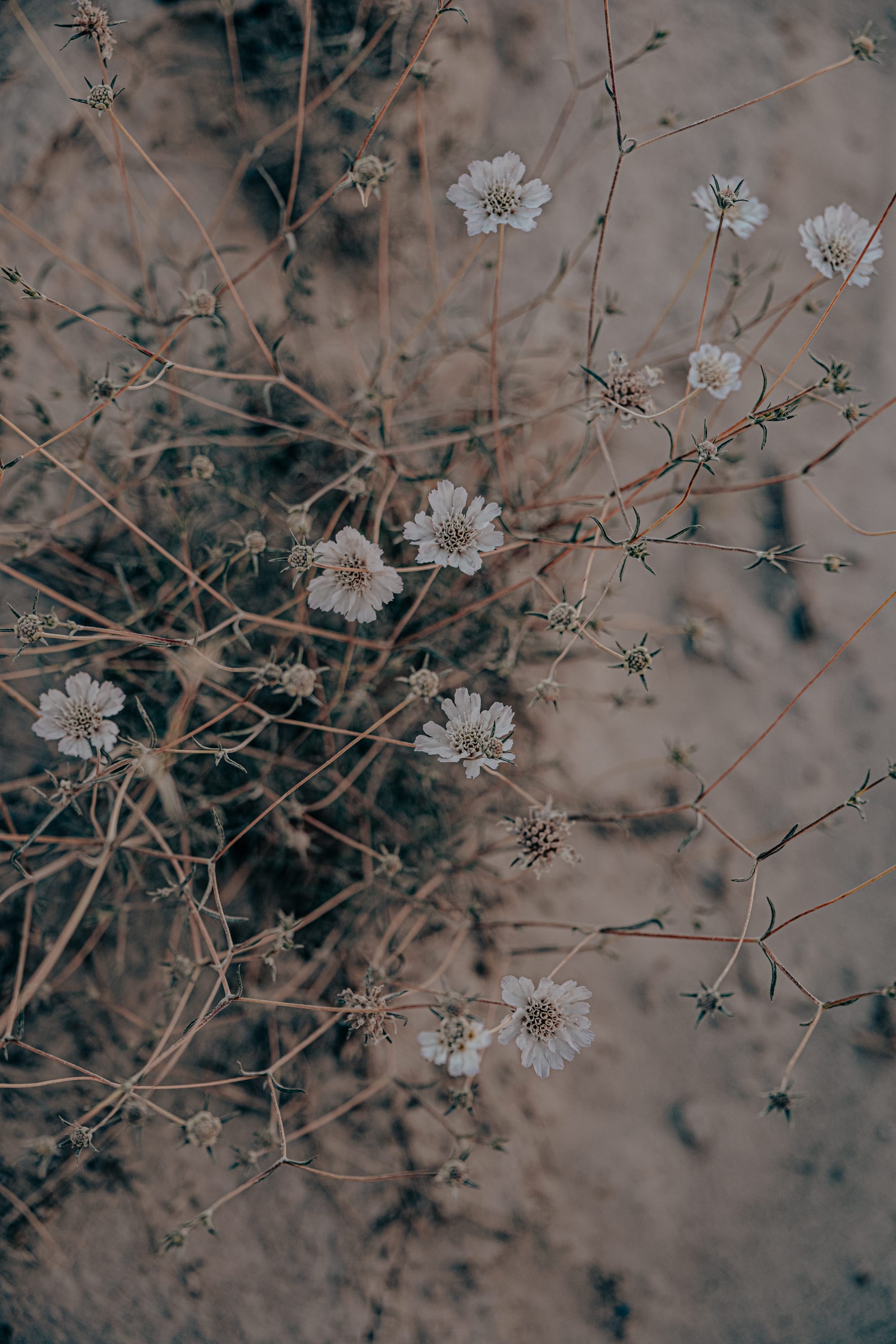
Close-up of Cappadocia’s resilient wildflowers
On a young euphorbia plant, we noticed a colorful caterpillar methodically chewing through the succulent leaves. Its striking black body, marked with bright orange spots and a coral-red head, was a tiny burst of color against the muted tones of the valley.
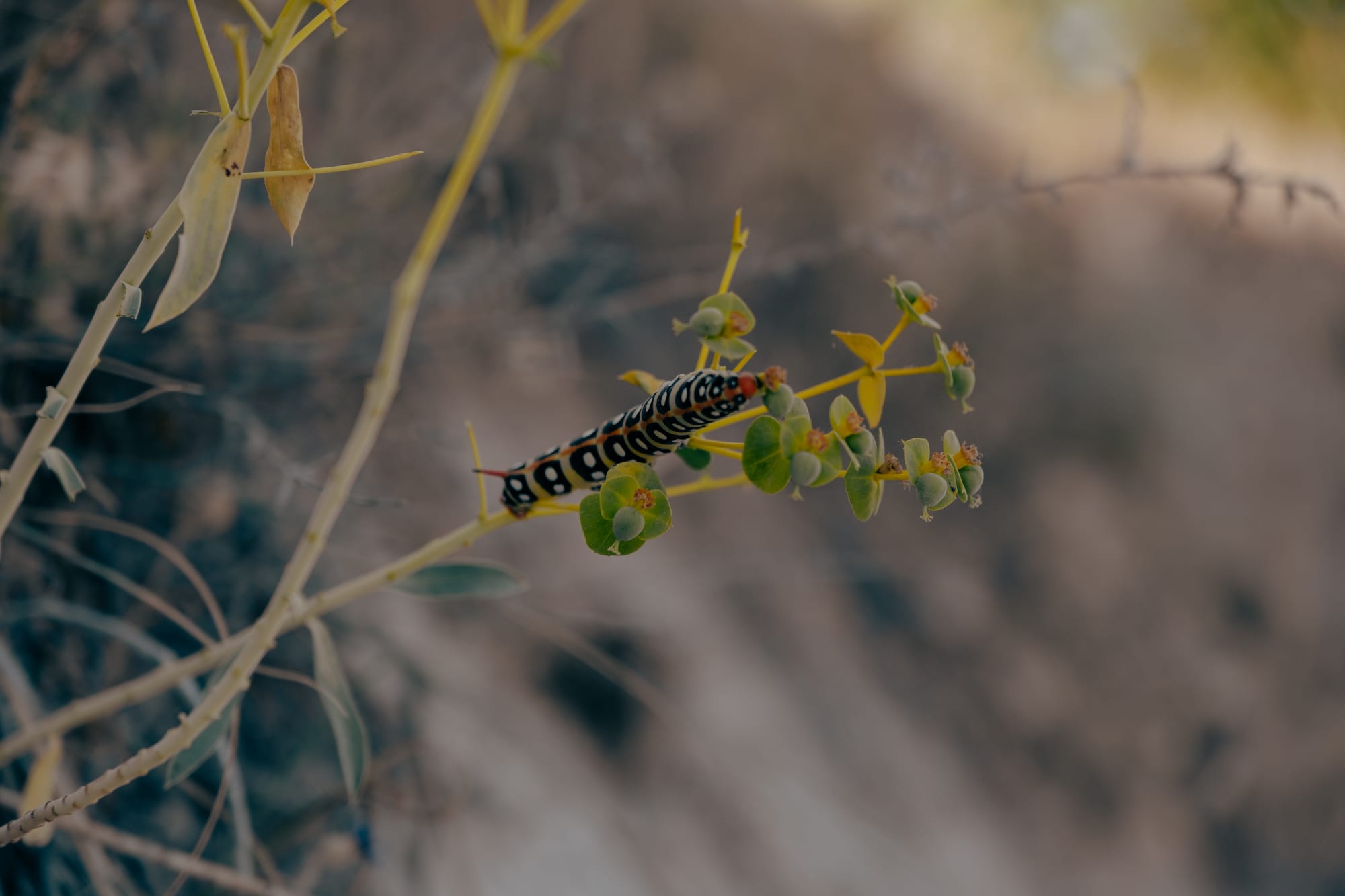
The terrain here alternated between soft, sandy stretches and more rugged rock sections, each turn revealing another dramatic view.
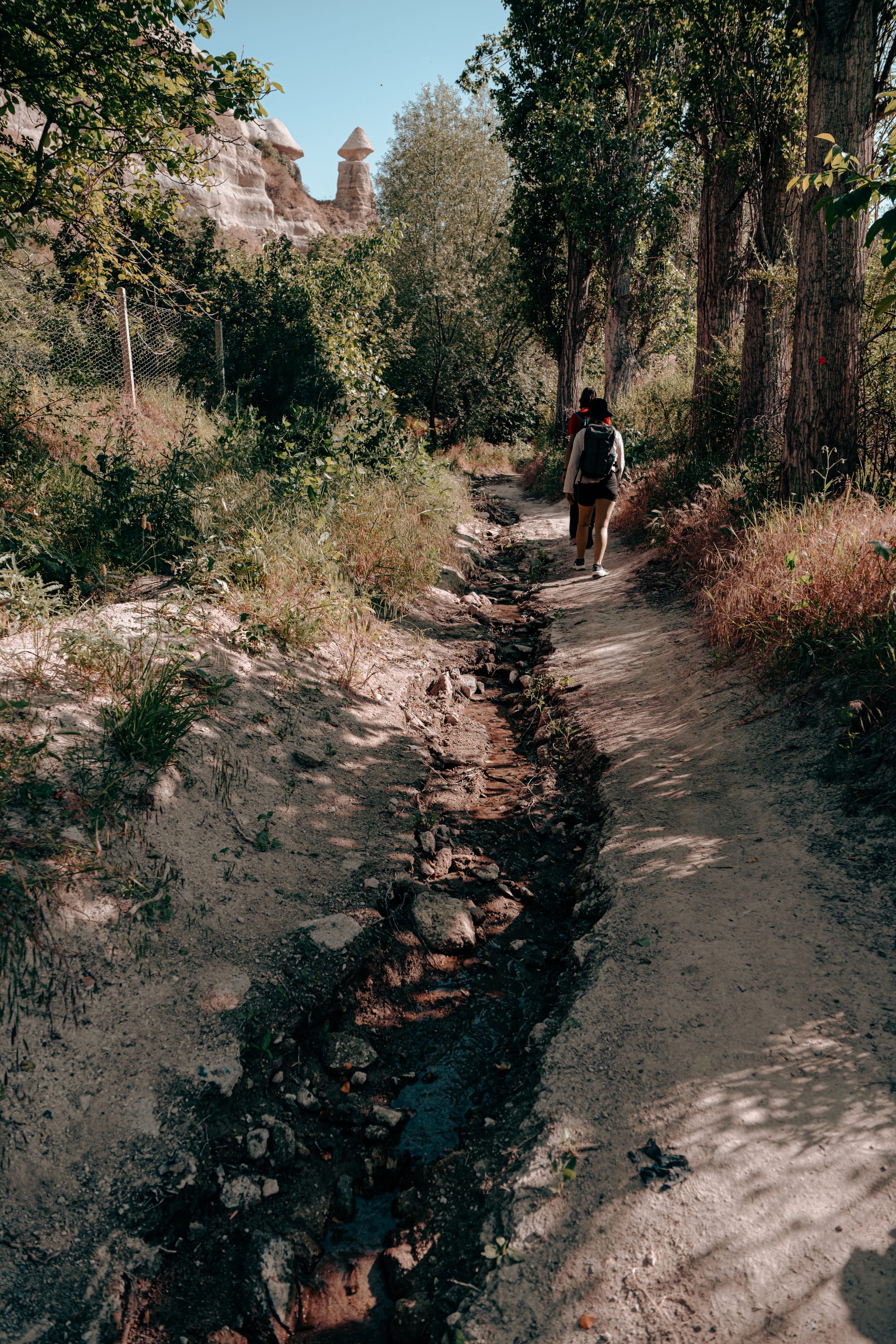
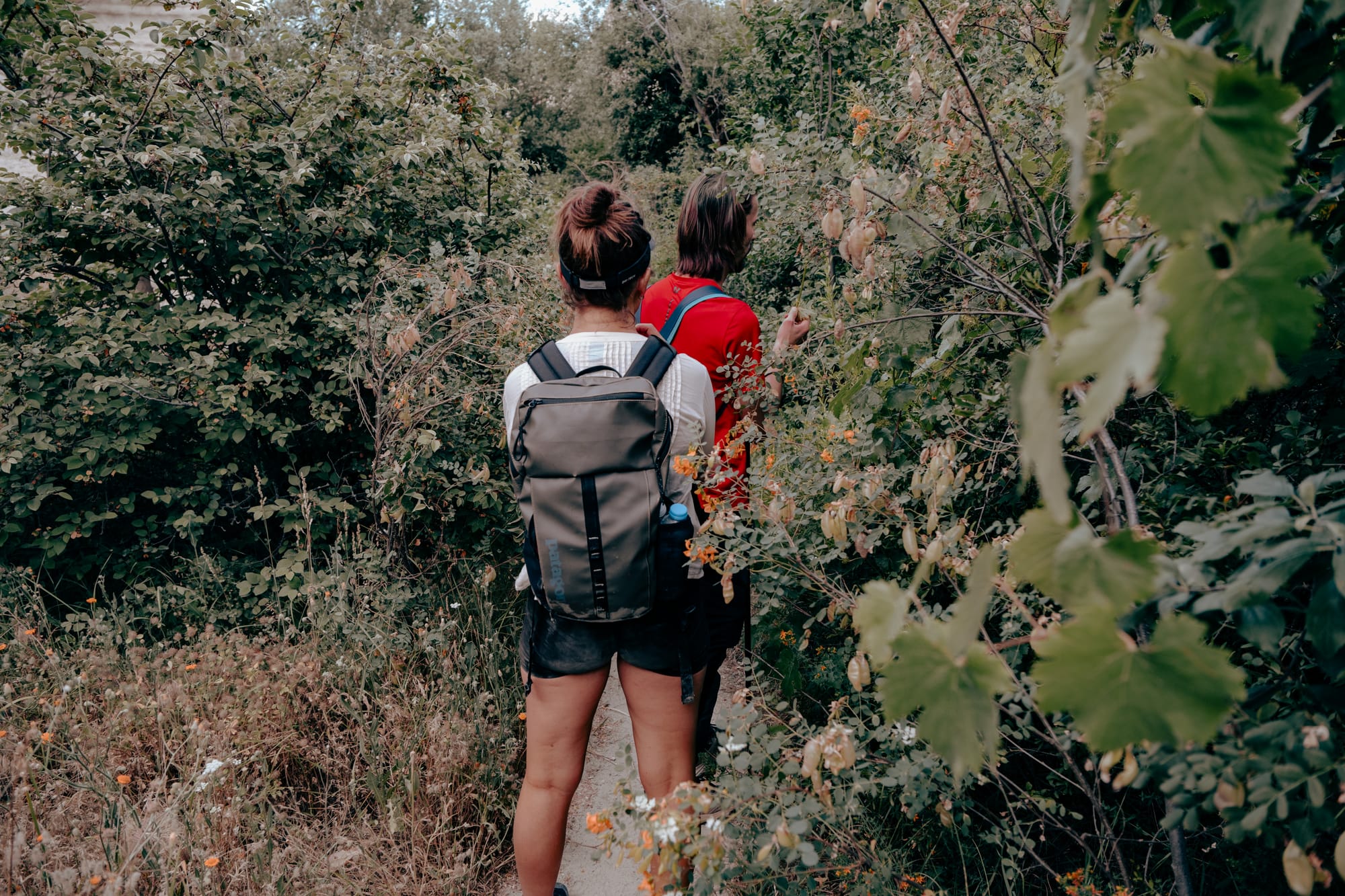
Exploring the shaded trails of Pigeon Valley—from narrow paths beside trickling streams to overgrown sections
As we moved deeper into the valley, the rock walls seemed to close in, creating narrow passageways with towering sides.
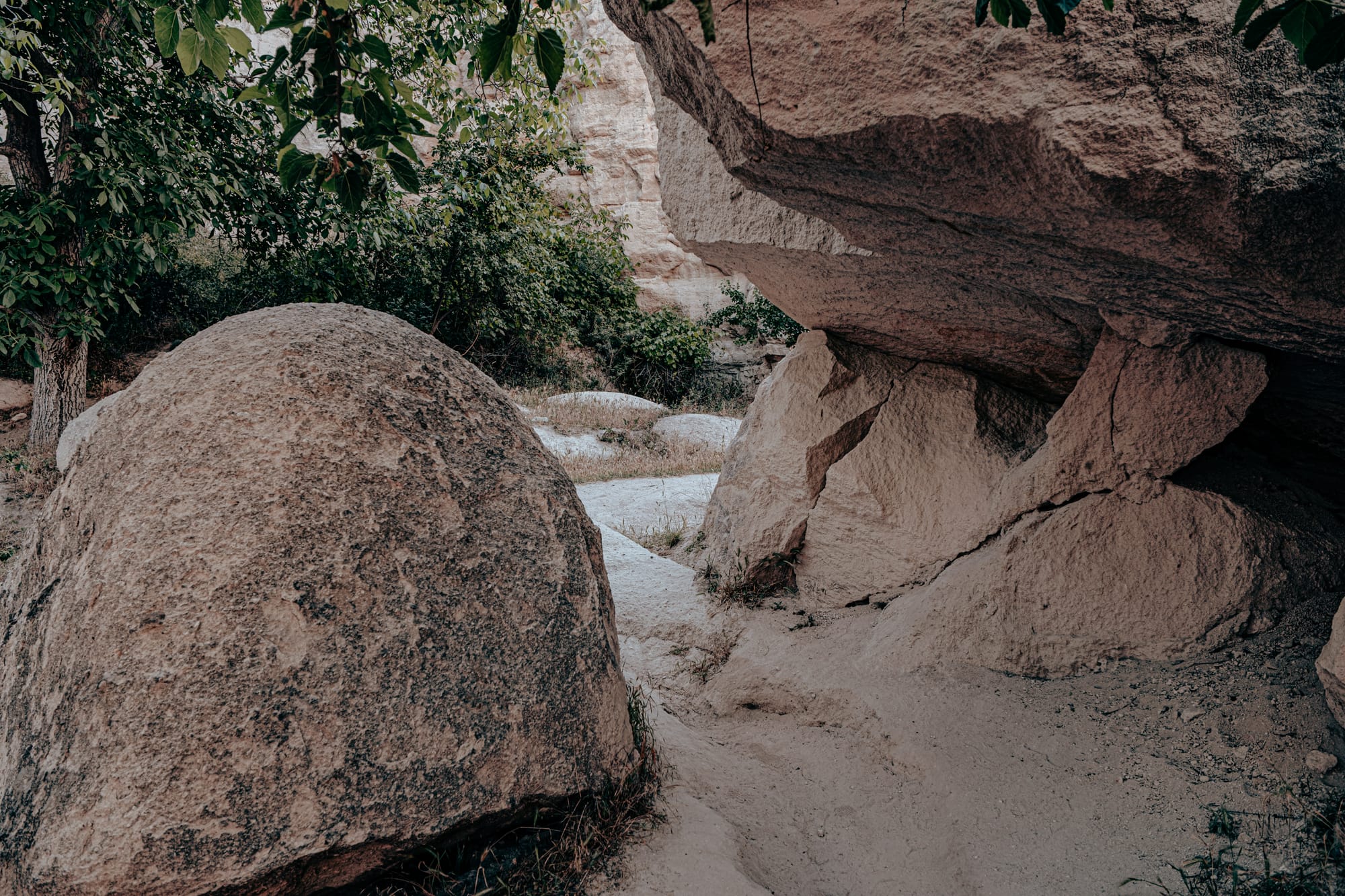
The sunlight filtered down in thin beams, highlighting the textures and earthy tones of the rock. These were moments that felt truly timeless, as though very little had changed here over the centuries.
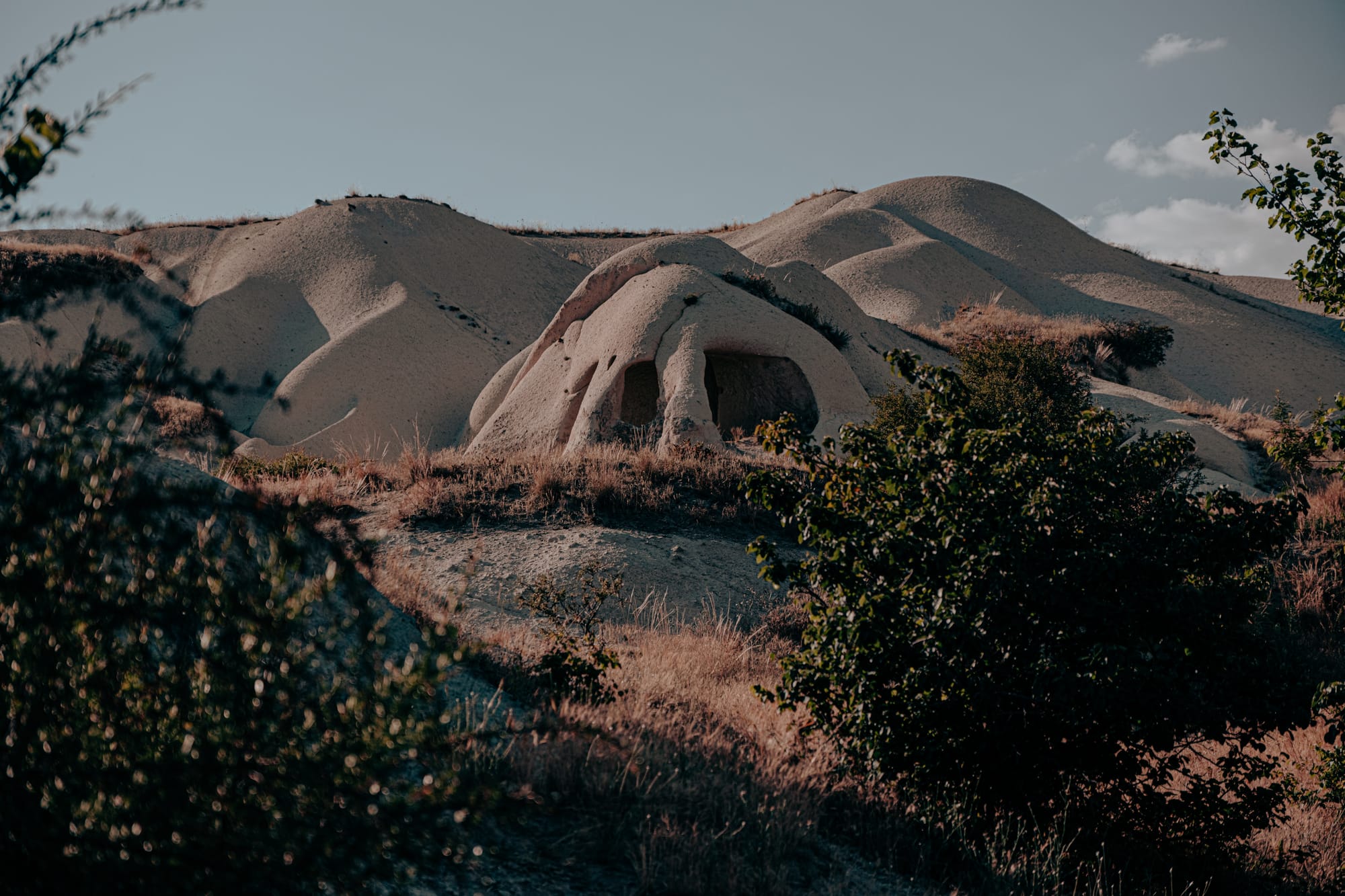
Toward the end of the hike, the views opened up to unique rock formations and wide-sweeping views of the valley.
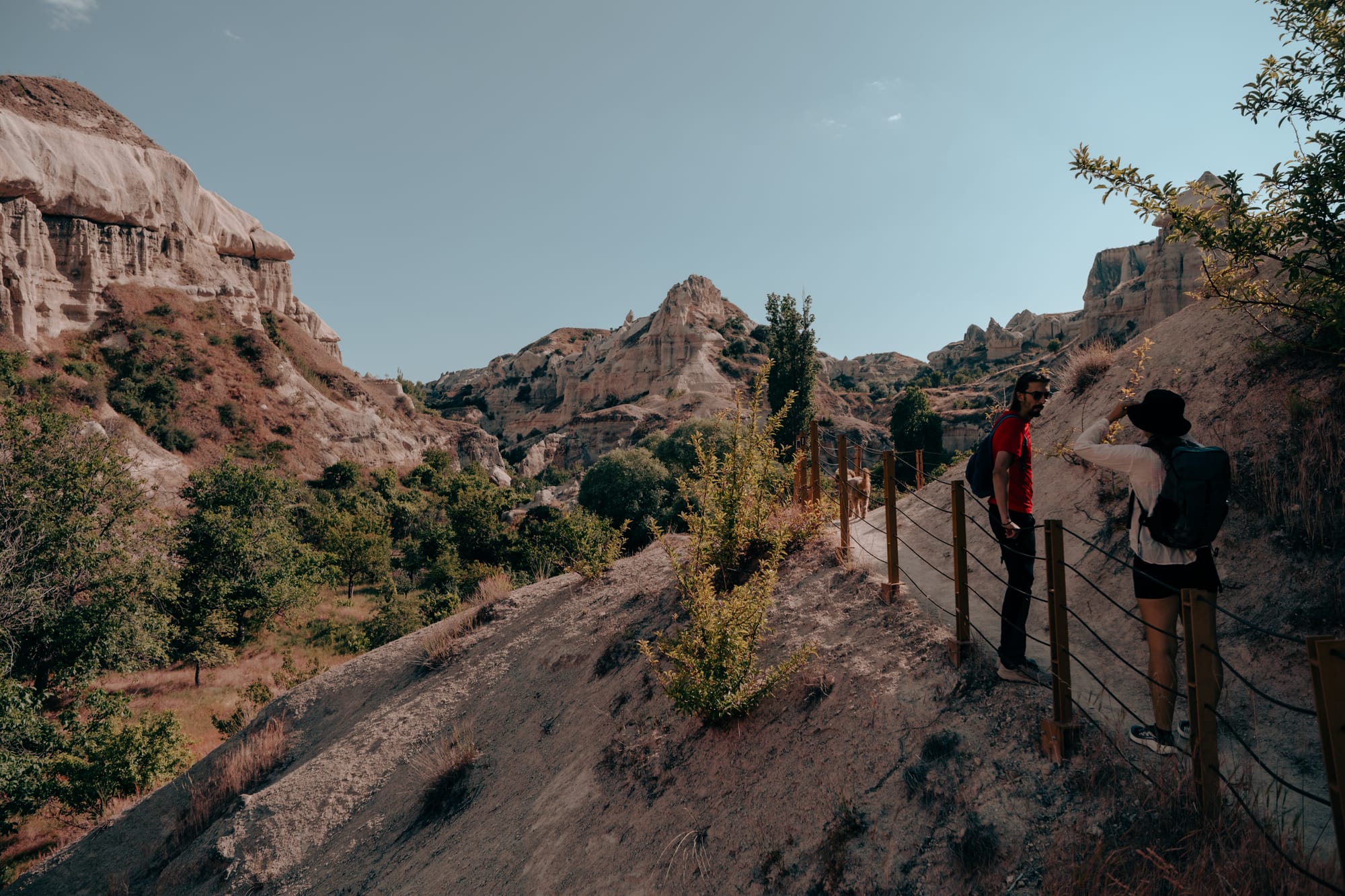
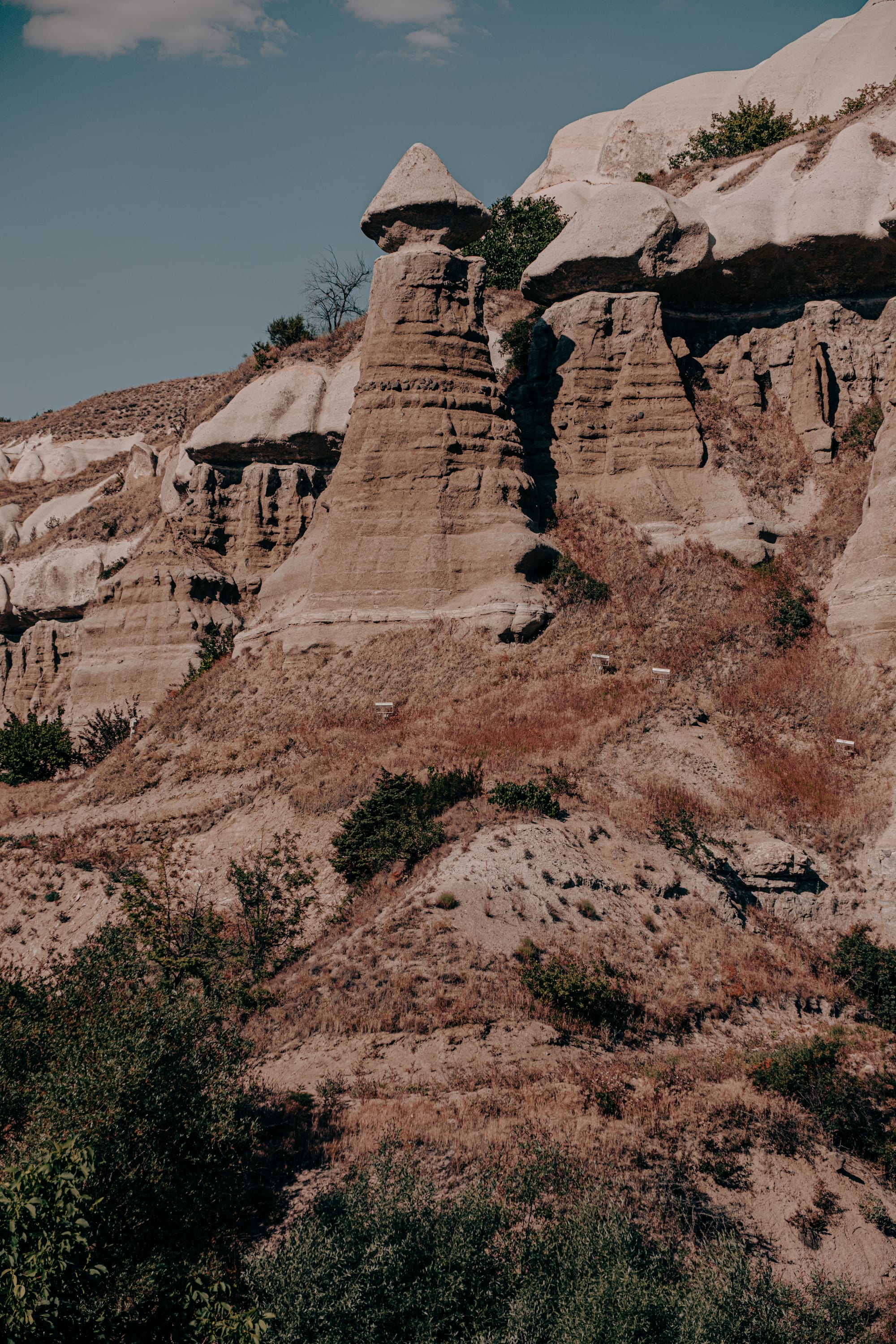
Pausing on a narrow ridge in Cappadocia to take in sweeping views of sculpted cliffs and valleys
Some of the rock formations here were similar to those we'd later see again in Love Valley.
Into White Valley
From the end of Pigeon Valley, we then walked across a few roads to get to White Valley. The change was immediate and striking—the creamy, chalky cliffs and formations gave the landscape a bright, almost otherworldly feel. This valley takes its name from the pristine color of its rock, which glows especially brilliantly under the midday sun.
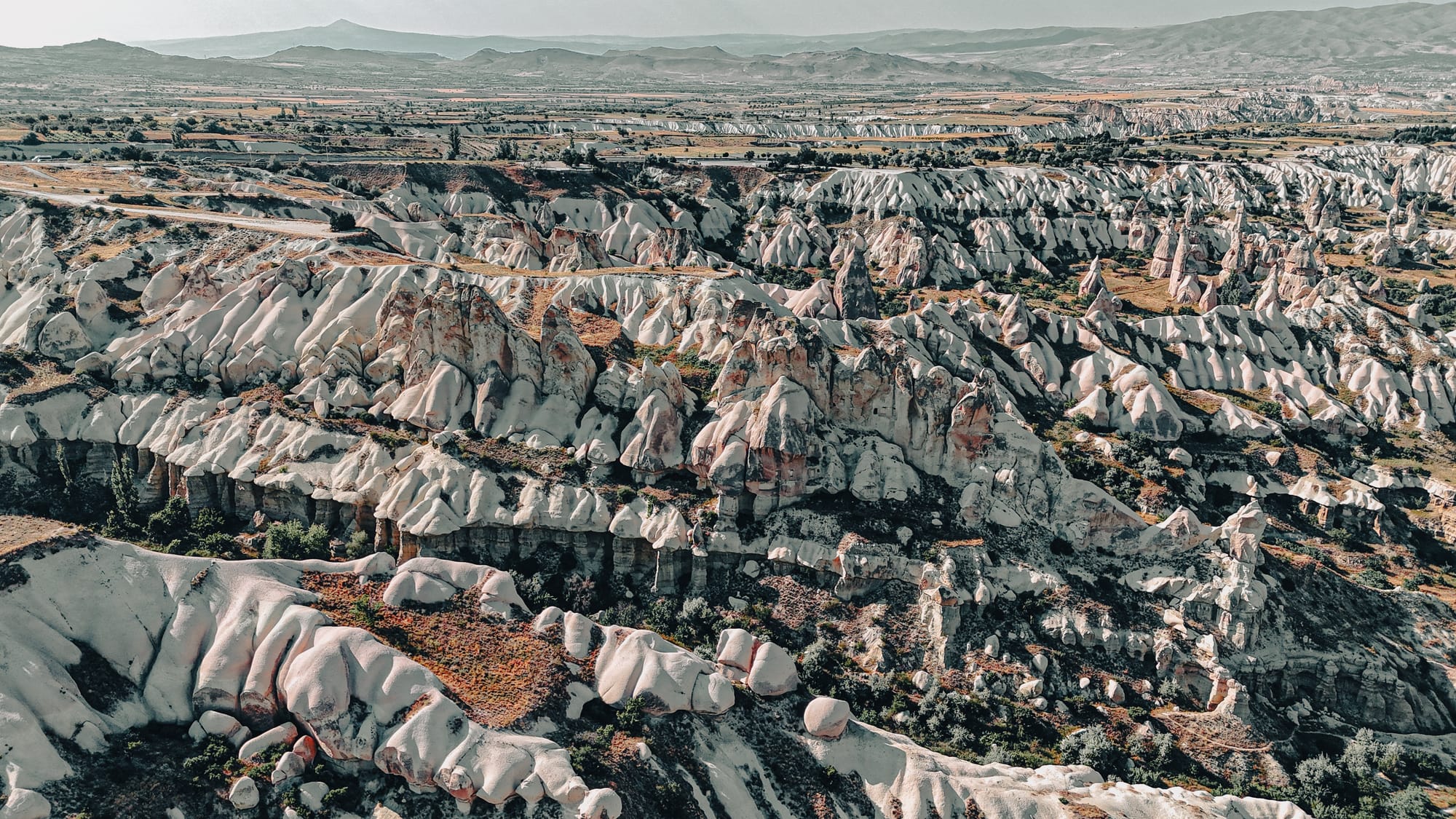
The formations here are tall and smooth, shaped by millennia of erosion into sweeping curves and dramatic slopes.
In places, the path narrowed to a ridge with steep drop-offs on either side, offering panoramic views of the surrounding valleys. We stopped often to take photos, the stark white backdrop making every shot look impossibly crisp.
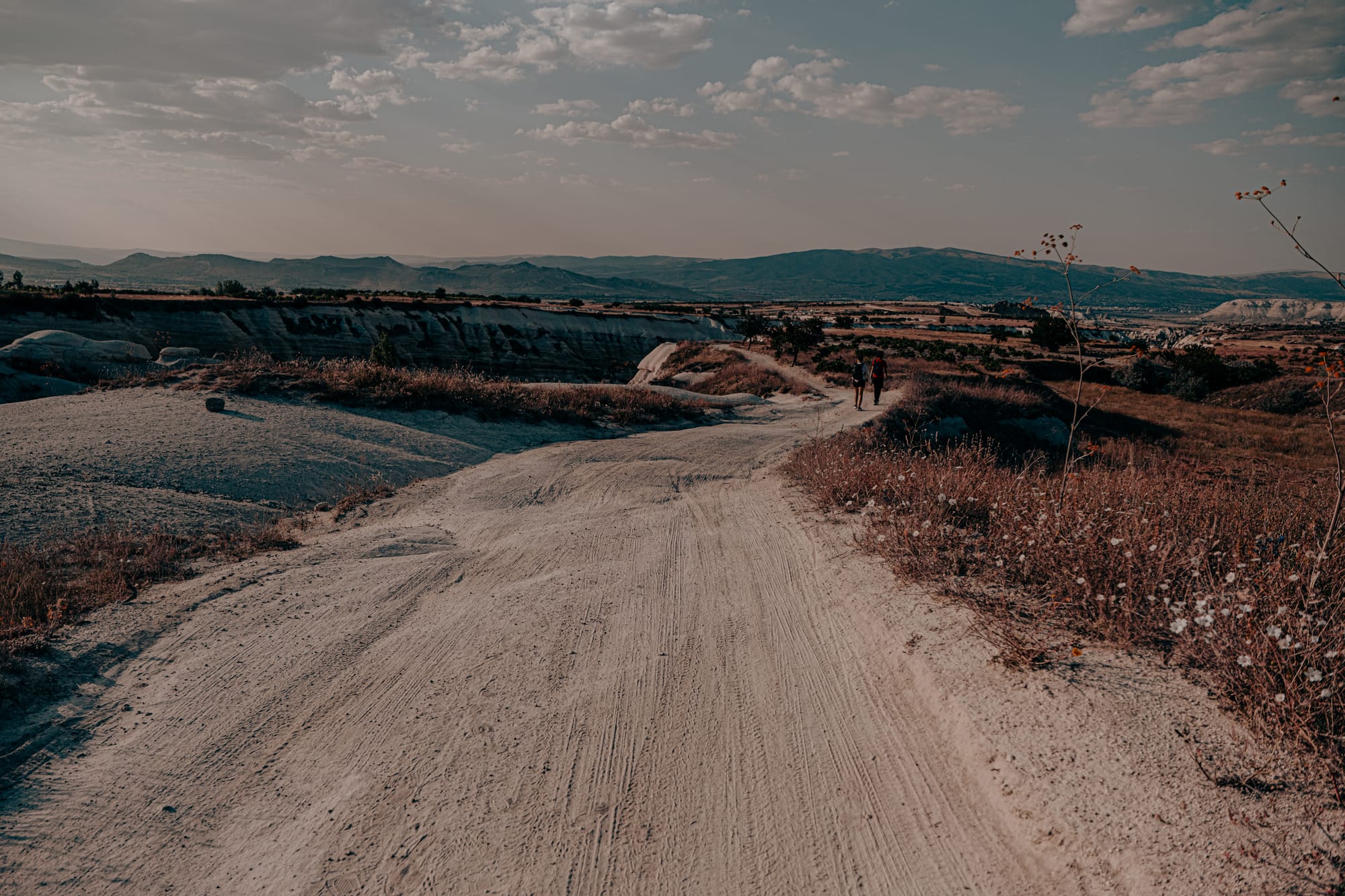
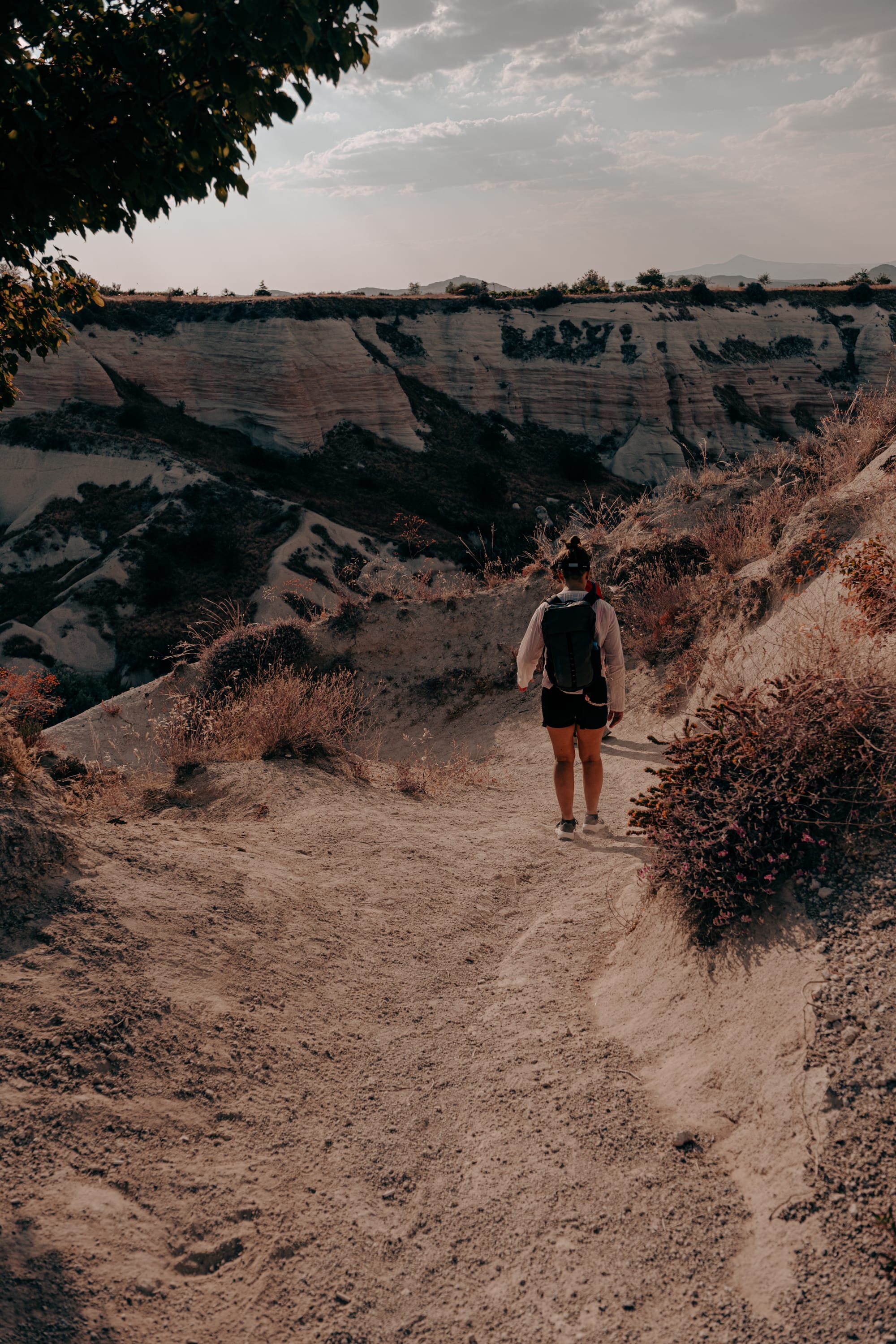
Following dusty white trails along the ridges of White Valley, where every turn reveals sweeping views of layered cliffs
The vegetation changed too. Amid the dry grasses, we found the golden buttons of immortelle, their papery petals holding their color long after blooming. A stand of bright yellow daisies lit up a corner of the trail like sunlight spilling over the earth. Further along, small crimson blooms caught our attention, their petals deepening to almost black at the center.
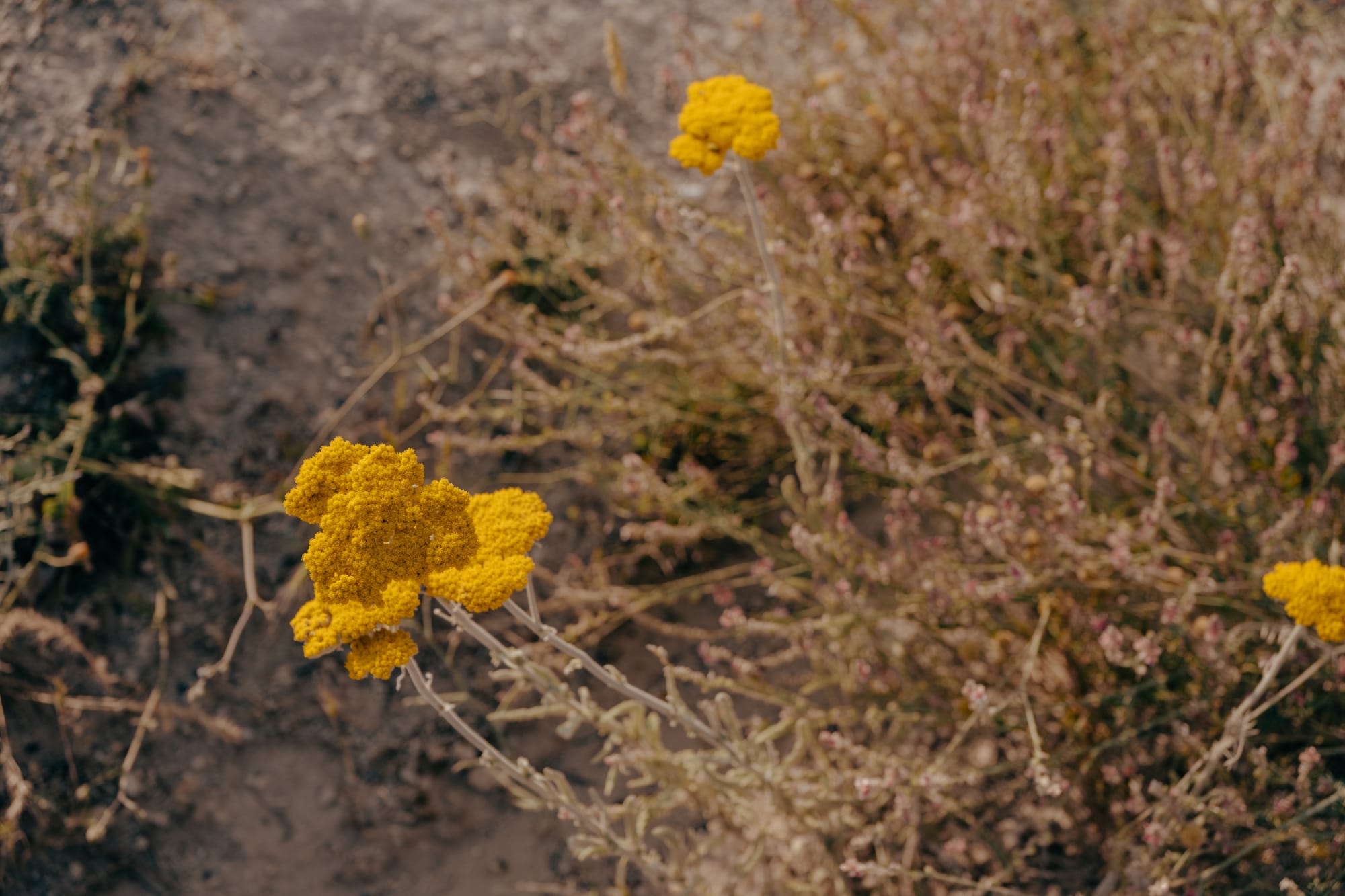
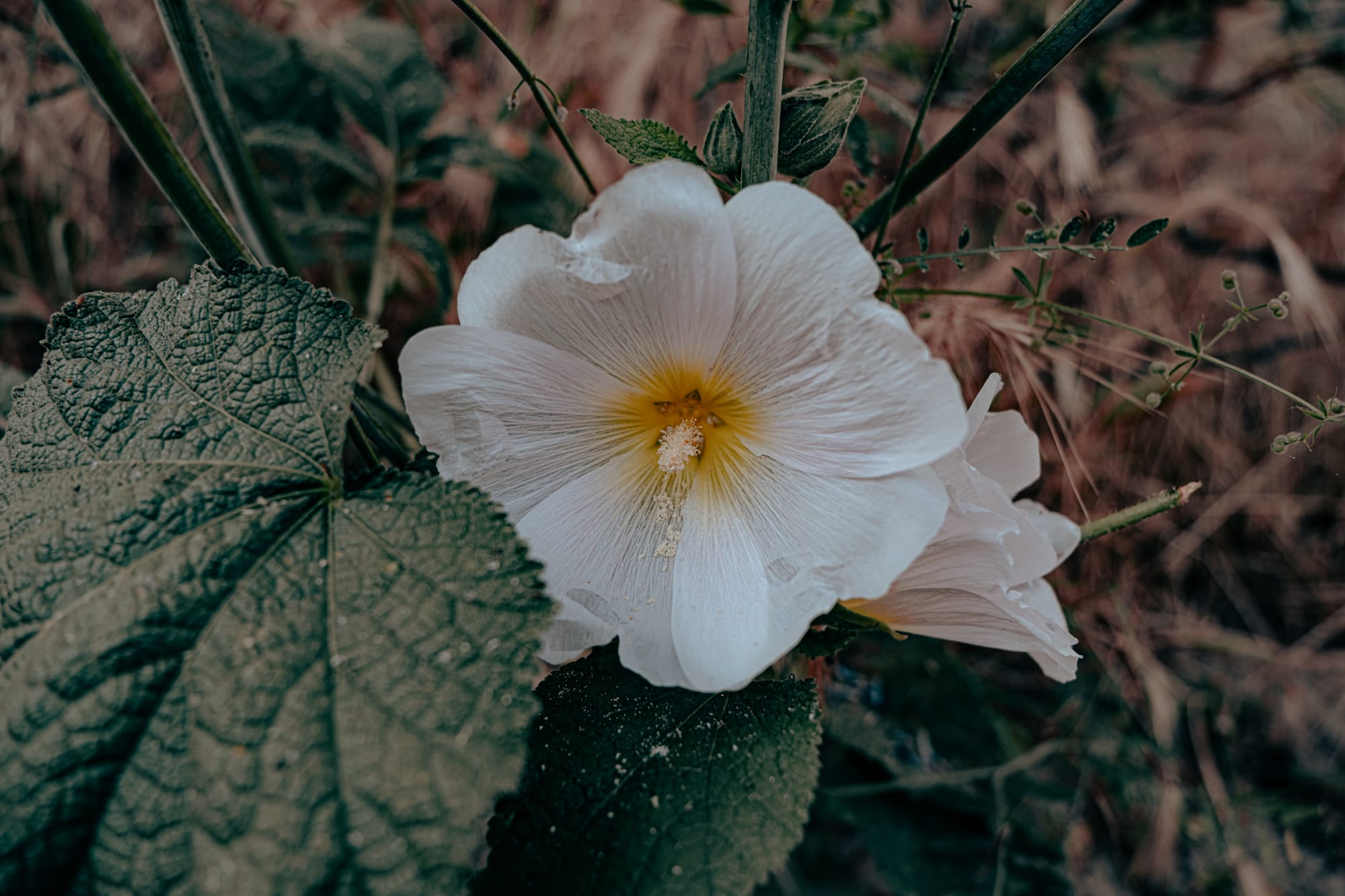
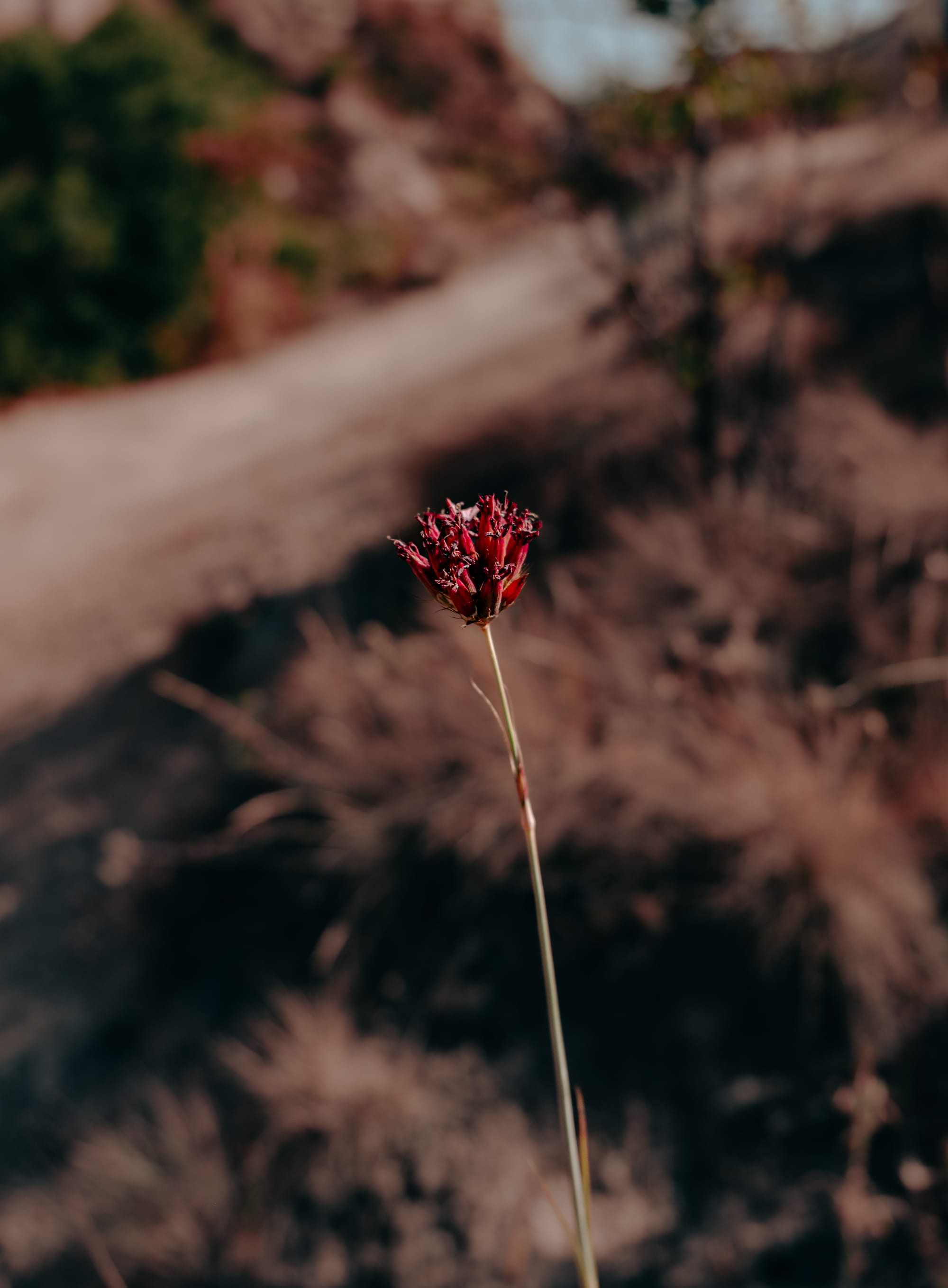
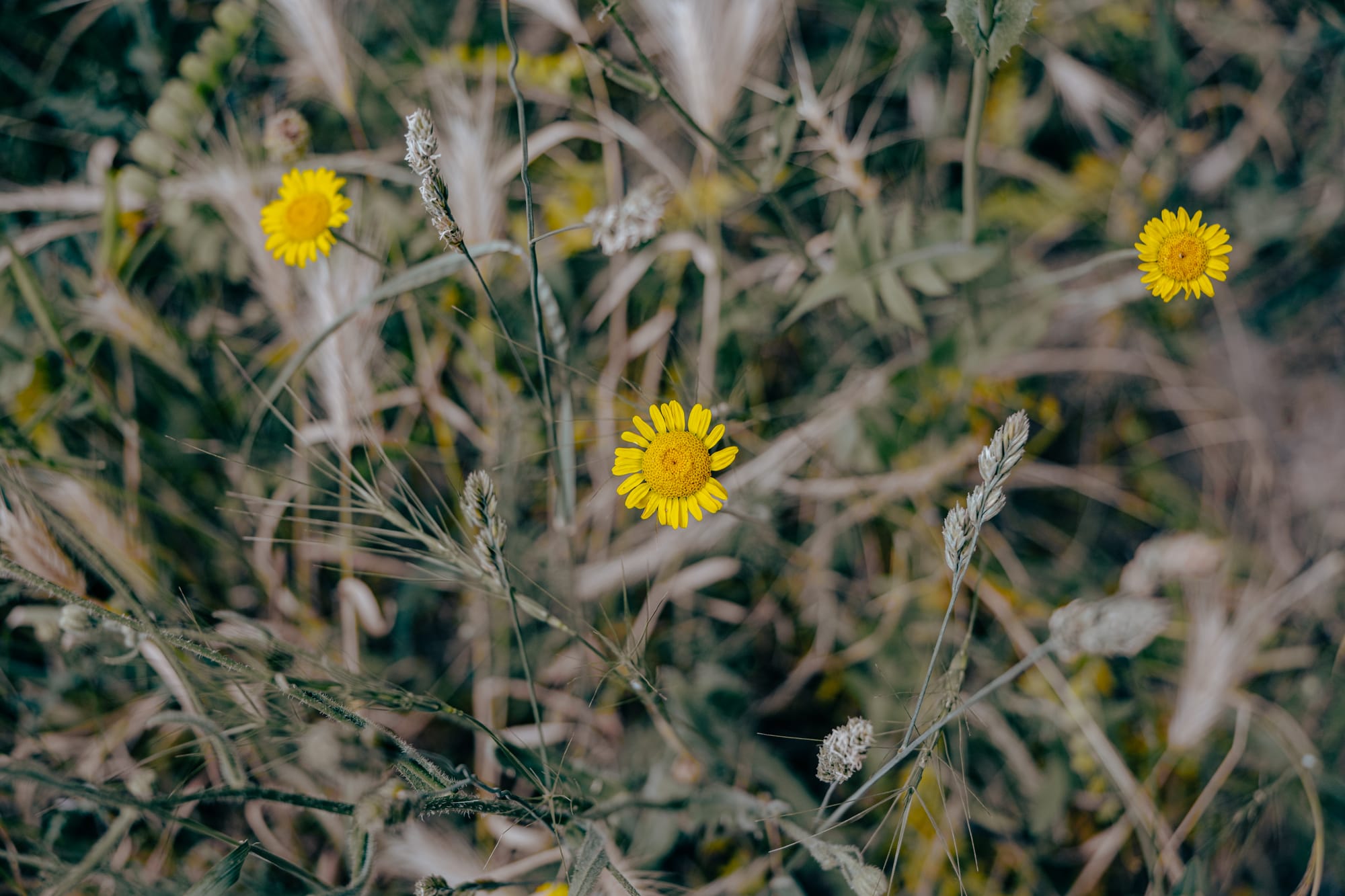
A vibrant collection of Cappadocia’s wild blooms, adding bursts of color to the valley trails
Şamil told us about the geology of the area, explaining how layers of volcanic ash and tuff were gradually sculpted by wind and water.

White Valley’s trails are a mix of soft sand and firmer paths, with occasional climbs that give you a higher vantage point over the vast, pale expanse.
The warm hues of Honey Valley
After the cool elegance of White Valley, Honey Valley greeted us with a completely different mood. The rocks here are infused with warm tones—golden yellows, rich browns, and soft oranges—that shift subtly with the changing light. This coloration is due to variations in the mineral content of the rock, and it gives the whole valley a welcoming, sunlit feel.
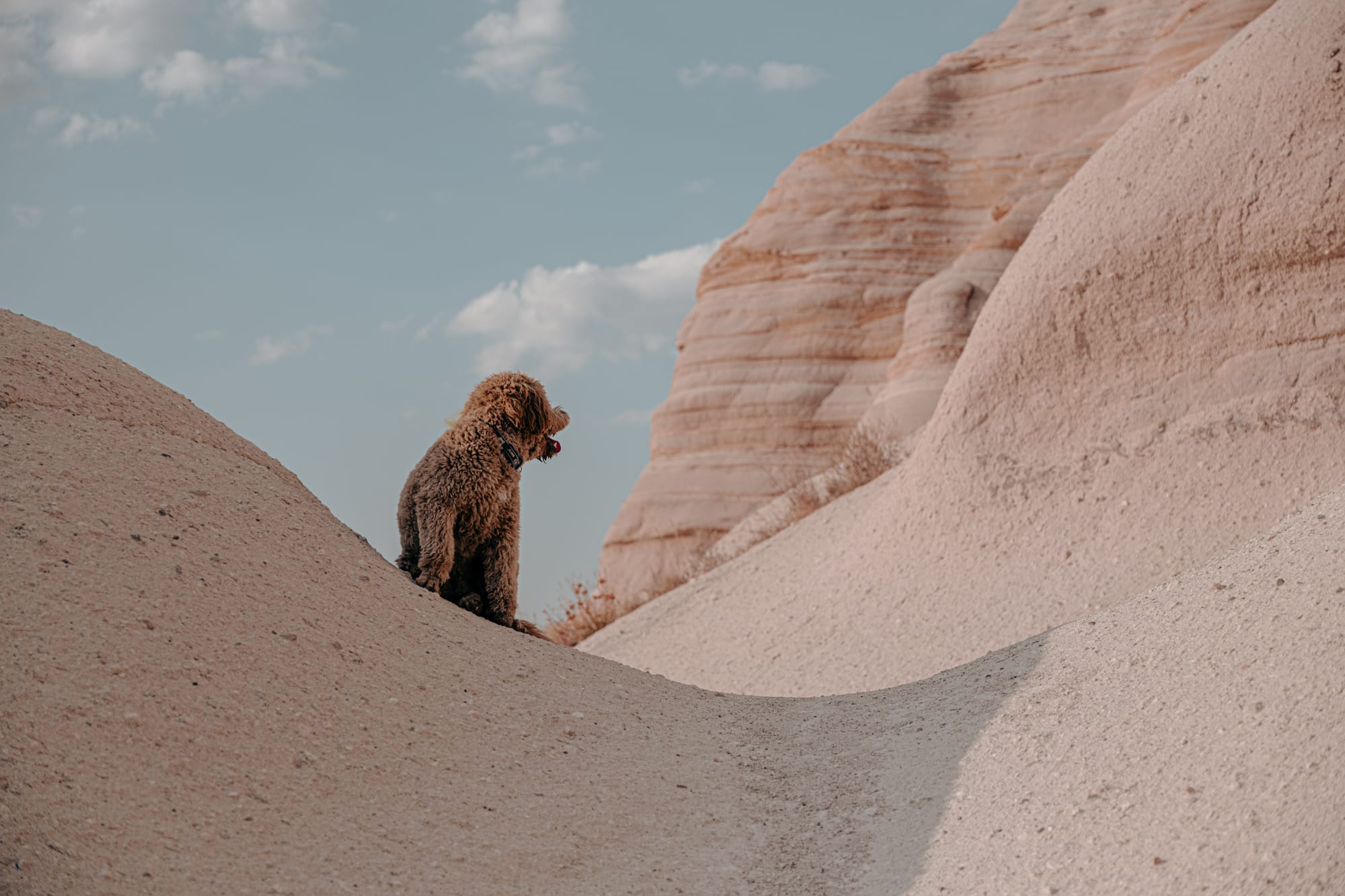
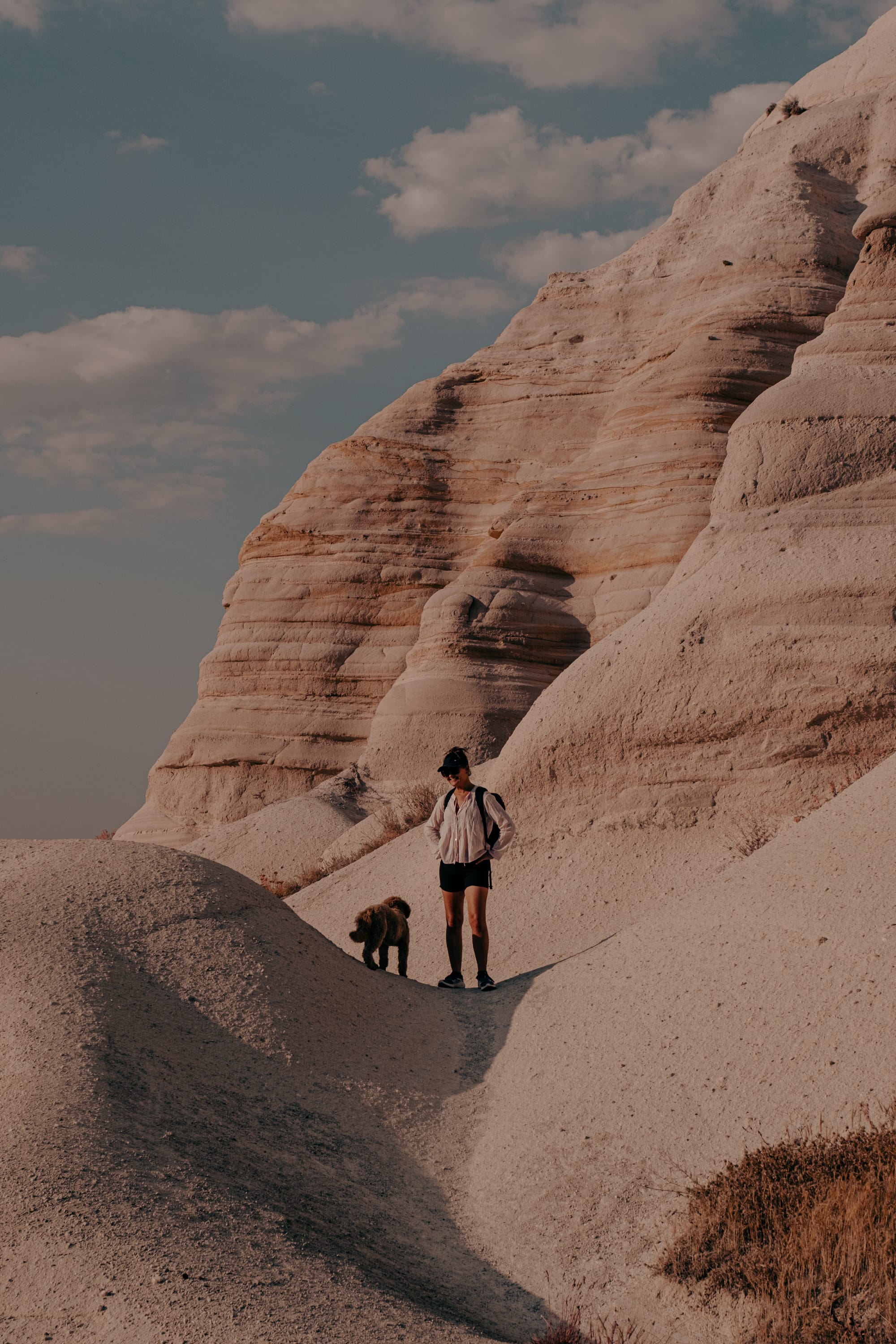
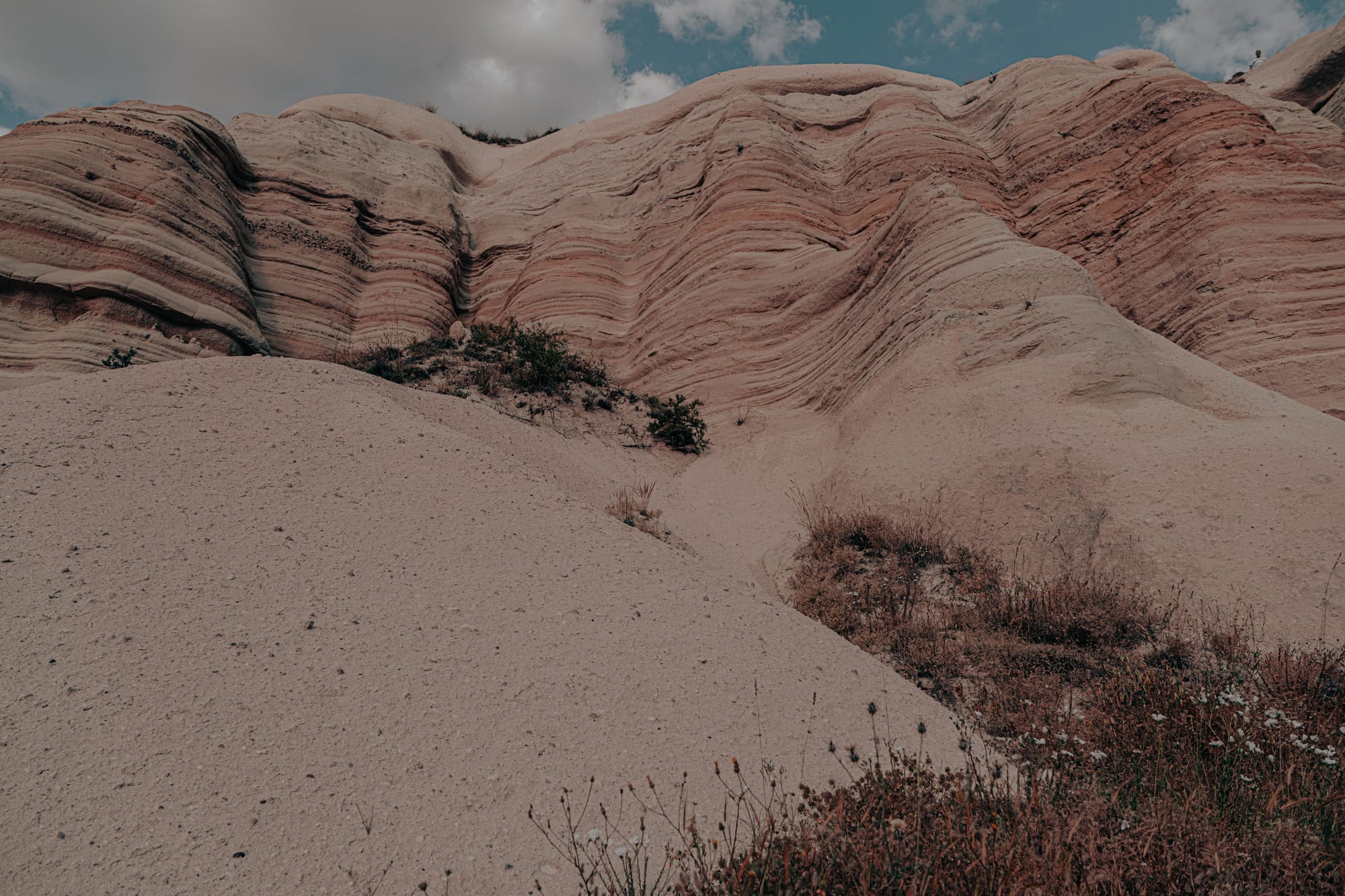
Hiking through the warm-toned ridges of Honey Valley, where golden light enhances the layered tuff formations
The formations here are more rugged, with craggy peaks and weathered surfaces. We walked alongside small orchards and patches of wildflowers, their colors intensified against the honey-hued cliffs.
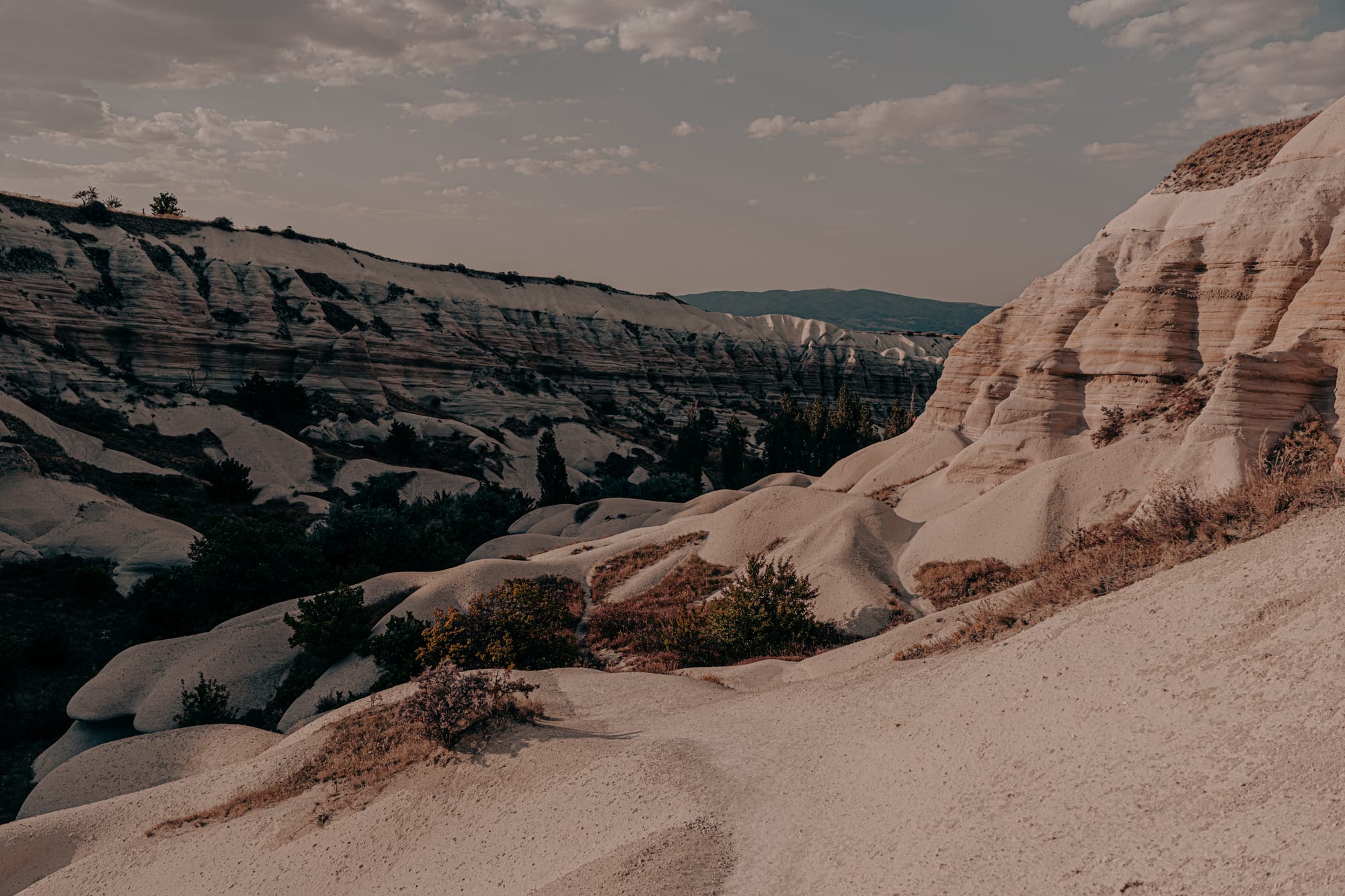
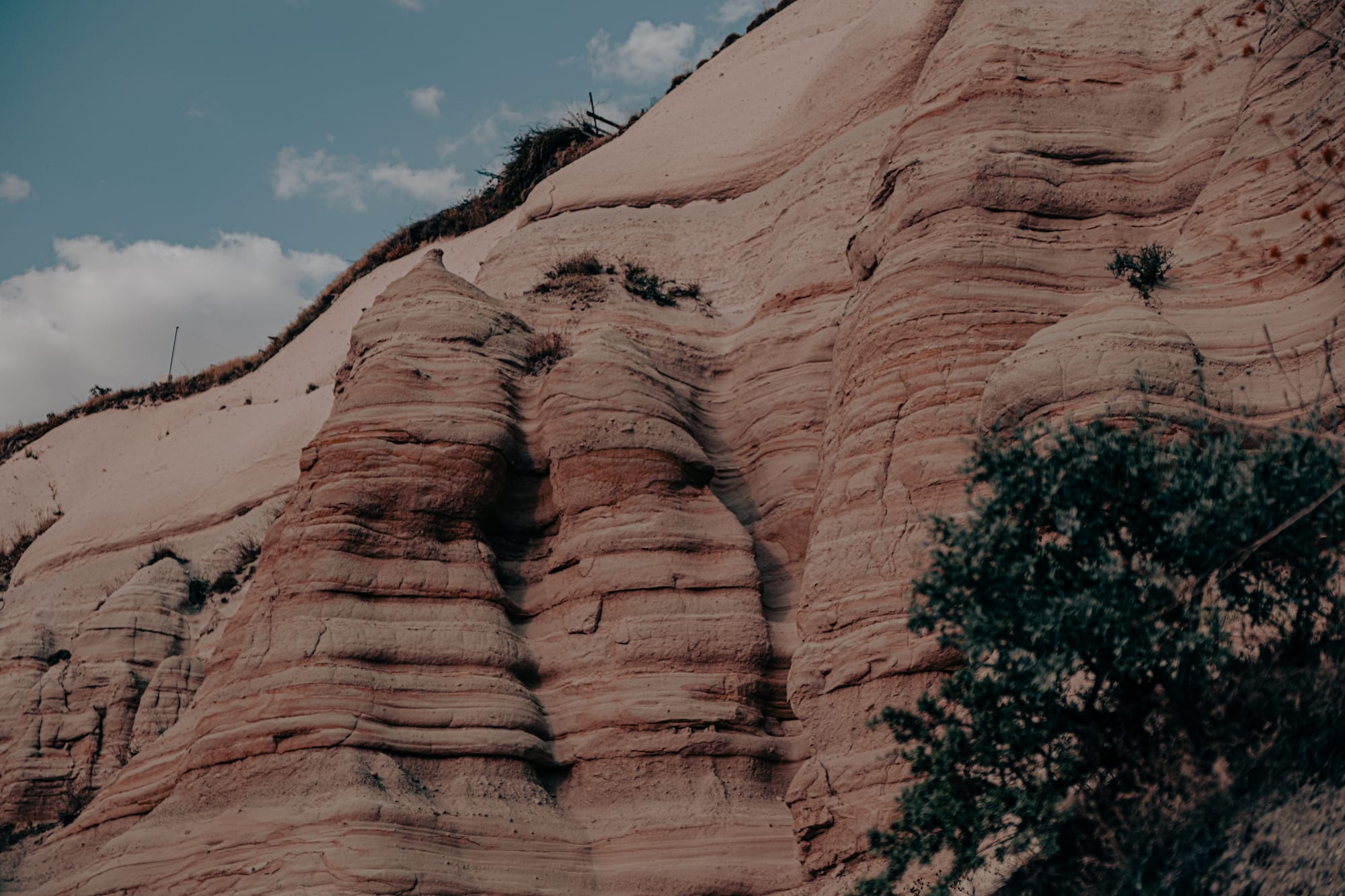
The golden-pink ridges of Honey Valley, where erosion has sculpted soft curves and layered bands of color
In a shaded bend of the path, a fallen tree harbored a large bracket fungus, with concentric rings of cream, rust, and brown.
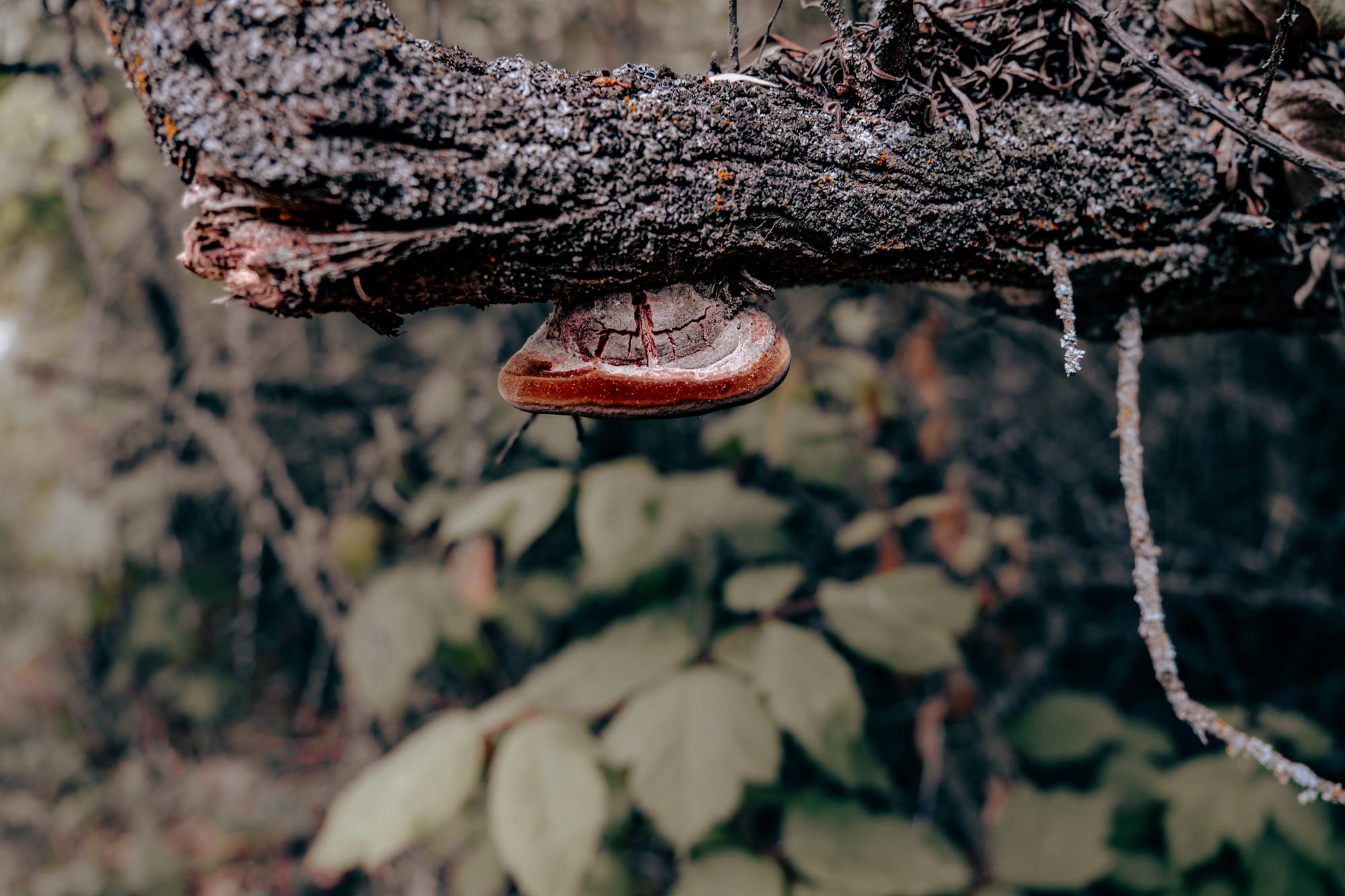
Honey Valley’s path meanders gently, allowing for an easy pace.
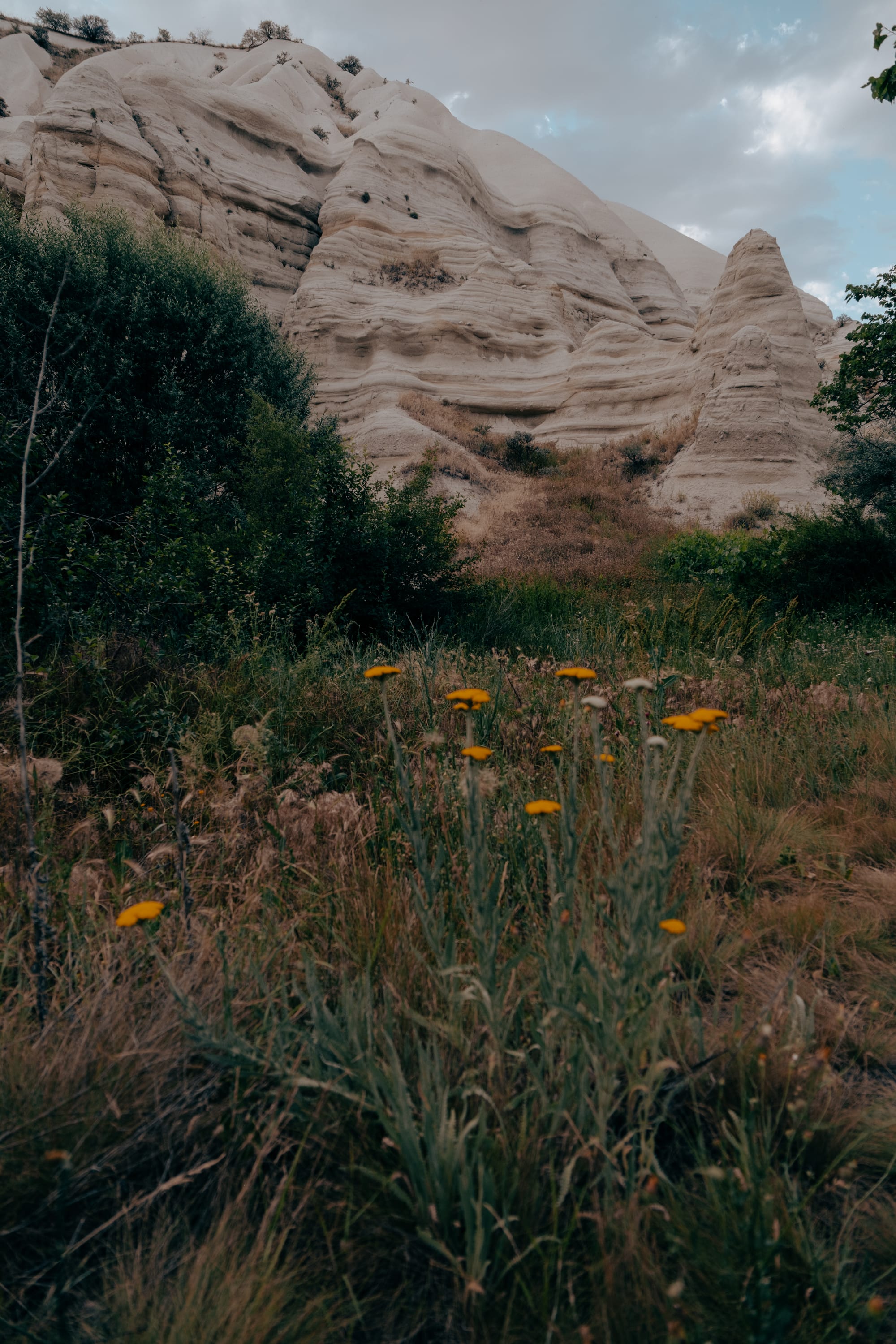
The valley floor is dotted with greenery, and we occasionally heard the sound of bees—a fitting soundtrack for a place named after honey.
The iconic Love Valley
Our final destination was Love Valley, famous for its distinctive rock formations. Erosion has sculpted the soft volcanic rock into tall, pillar-like shapes, many of which resemble phallic silhouettes—hence the valley’s name. It’s a playful, slightly cheeky sight, but also one of the most iconic landscapes in Cappadocia.
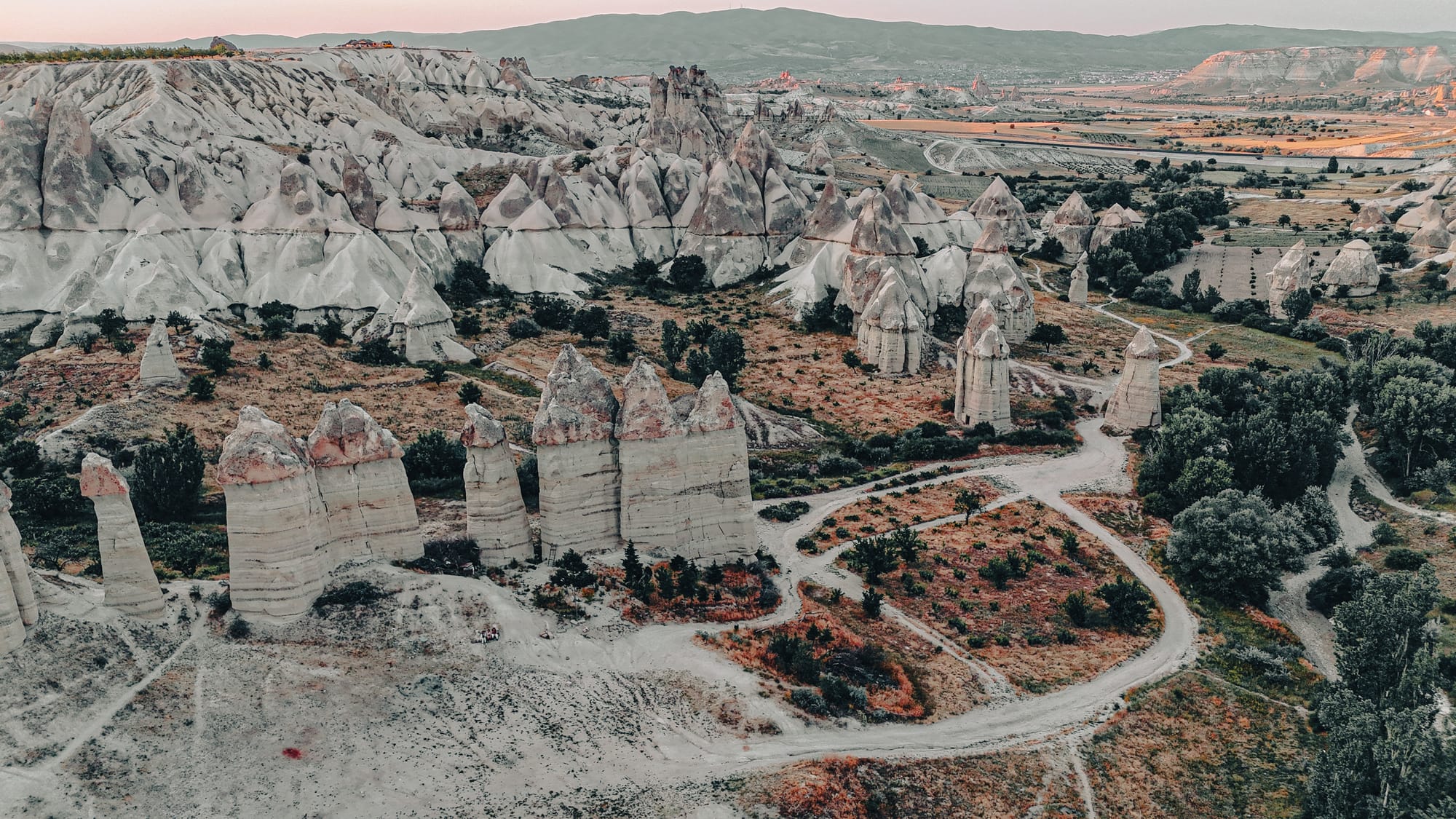
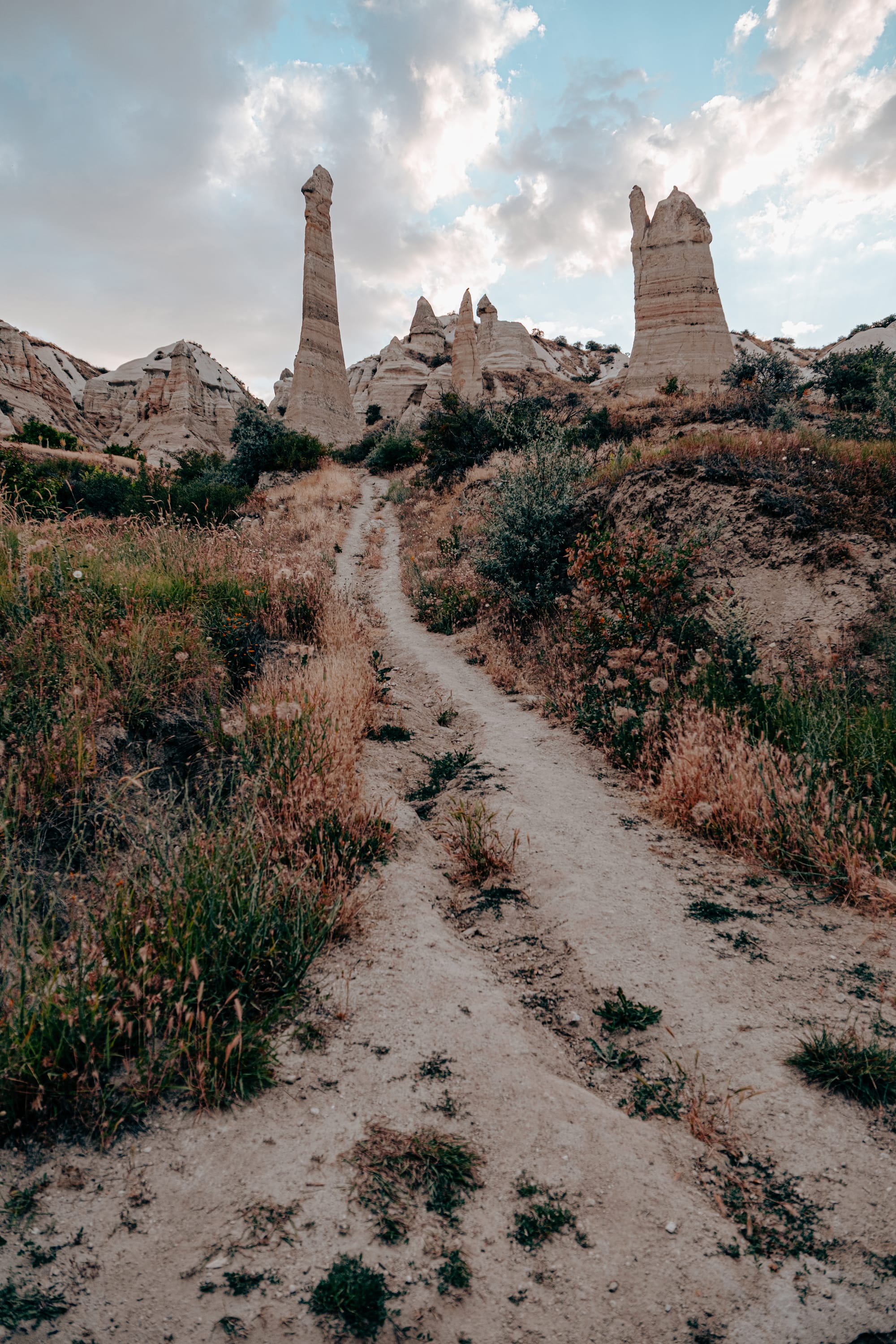
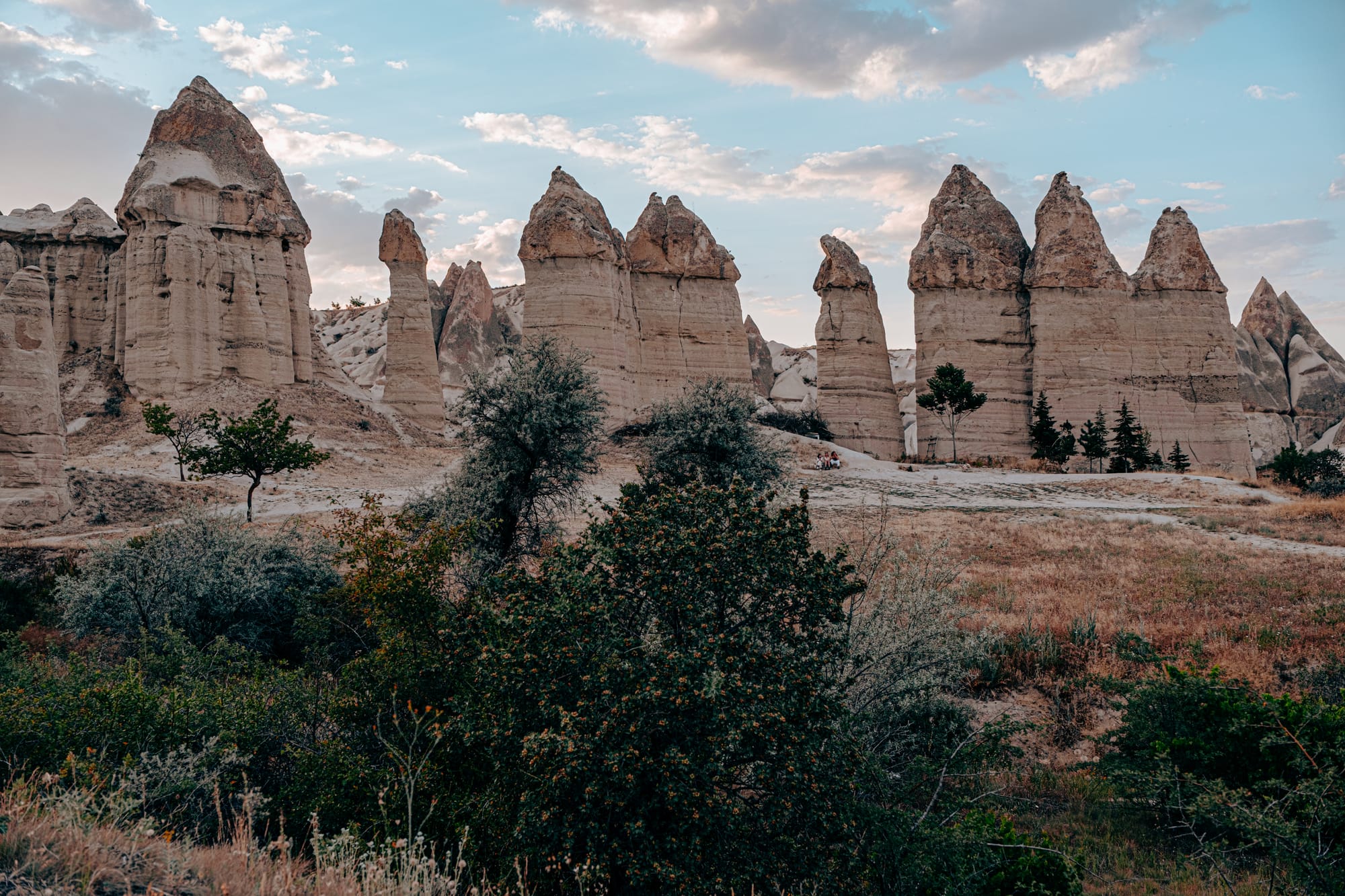
Walking among the towering, pillar-like rock formations of Love Valley
We timed our arrival here for the late afternoon, allowing us to watch the sunset from a high vantage point. As the sun dipped lower, the rock formations glowed in shades of pink, gold, and deep orange, casting long shadows across the valley floor. The view was mesmerizing and felt like the perfect culmination of the day’s journey.
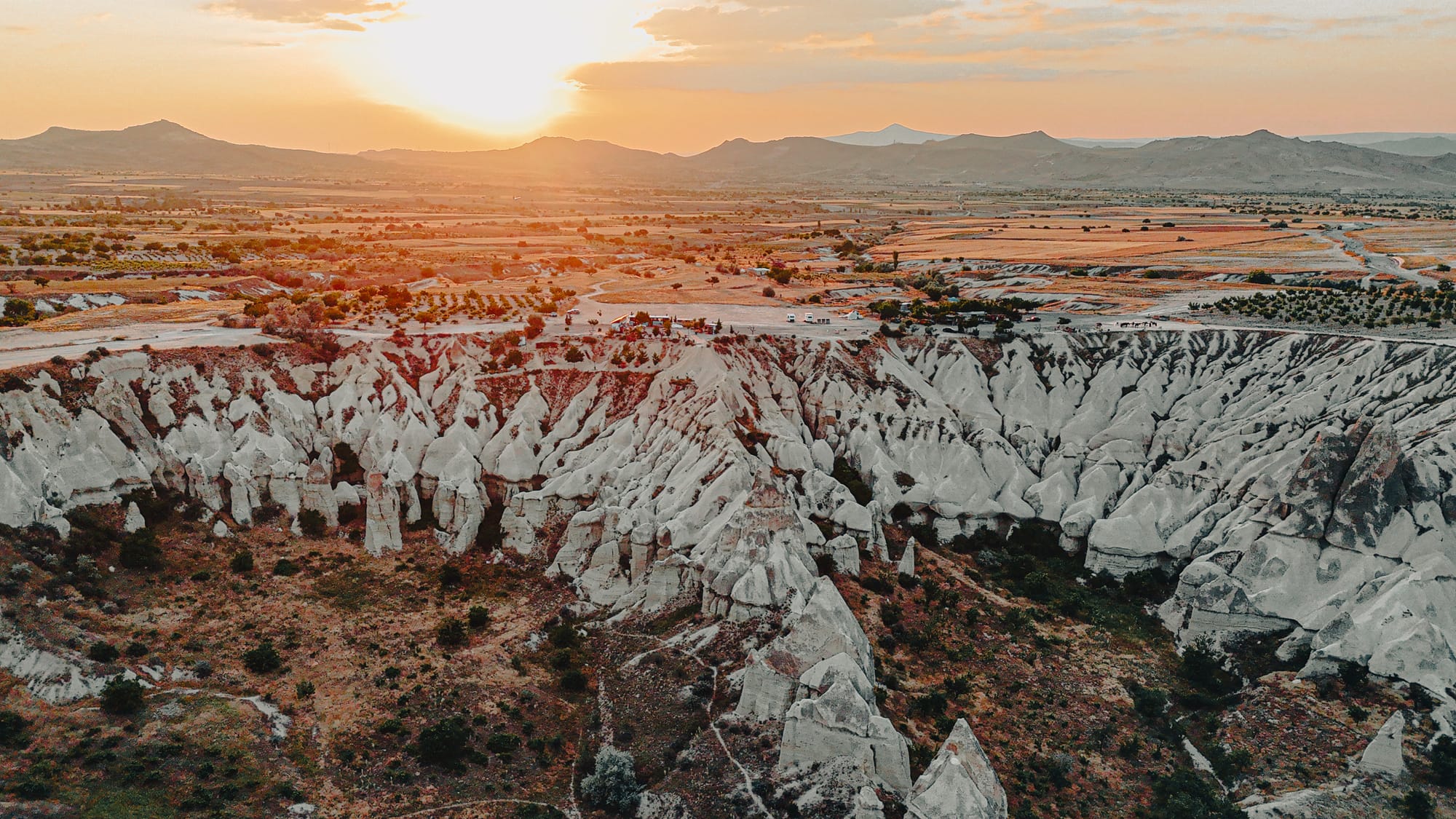
Love Valley’s open expanse made it easy to find a quiet spot to sit and take it all in. Oscar lay down beside us, content after a long day of walking, while Şamil shared more stories about his life in Cappadocia and the changes he has seen over the years.
Encounters along the way
Throughout the hike, we encountered moments that added character to the experience. In several places, we saw camels tied up along the path—a reminder of the agricultural life that still continues in this region. While it’s always a bit sad to see animals tethered, it’s also a reality of rural Cappadocia.
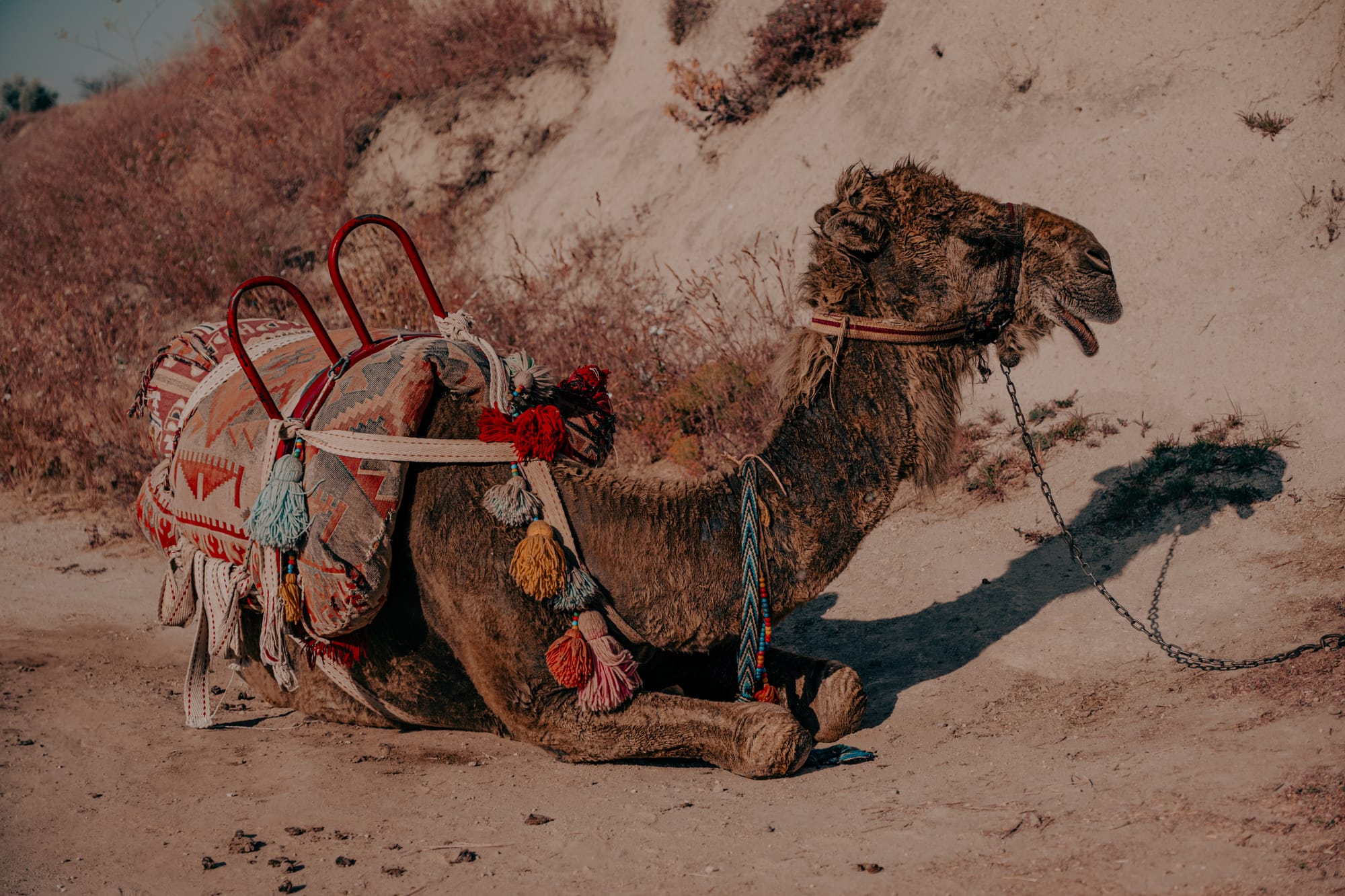
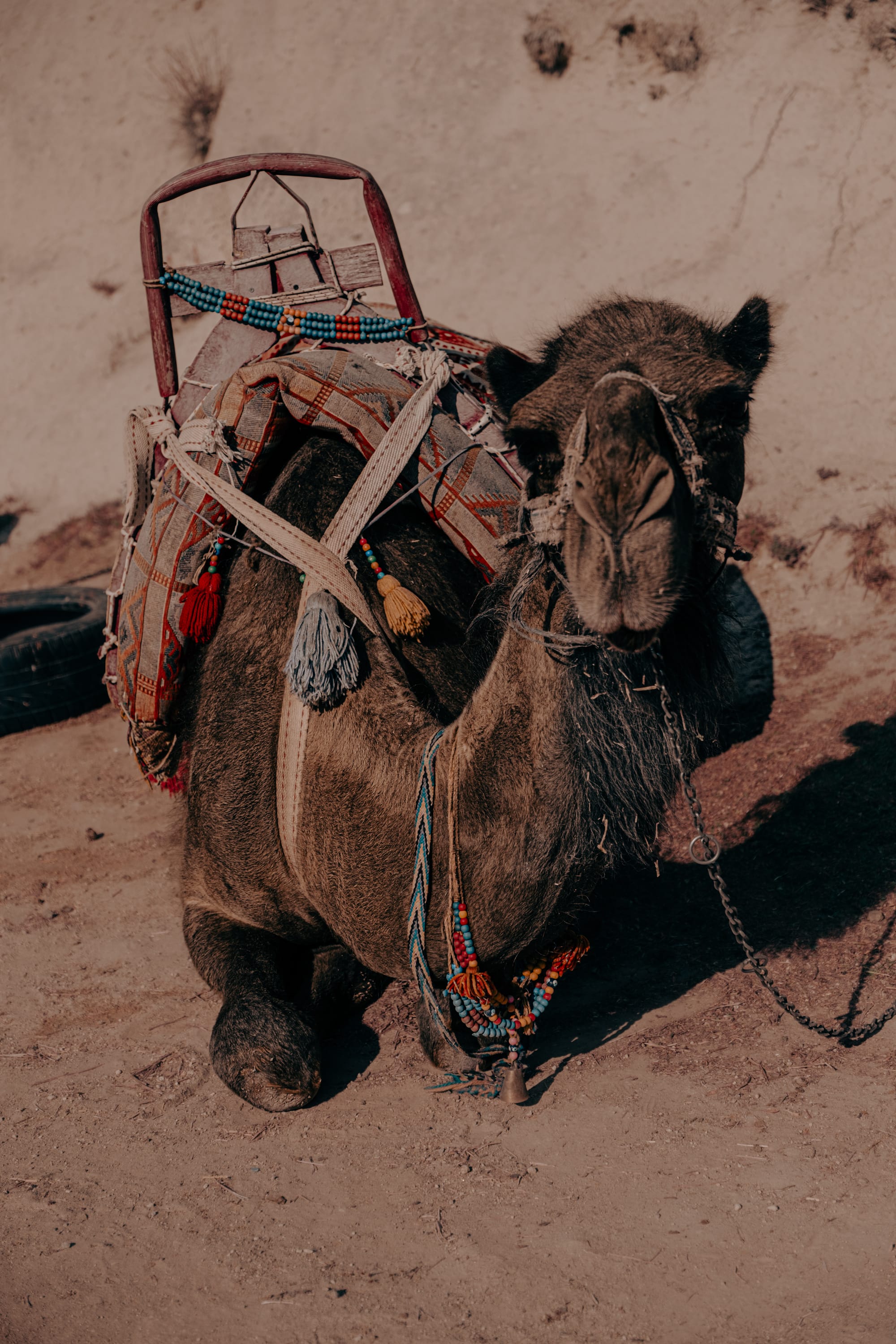
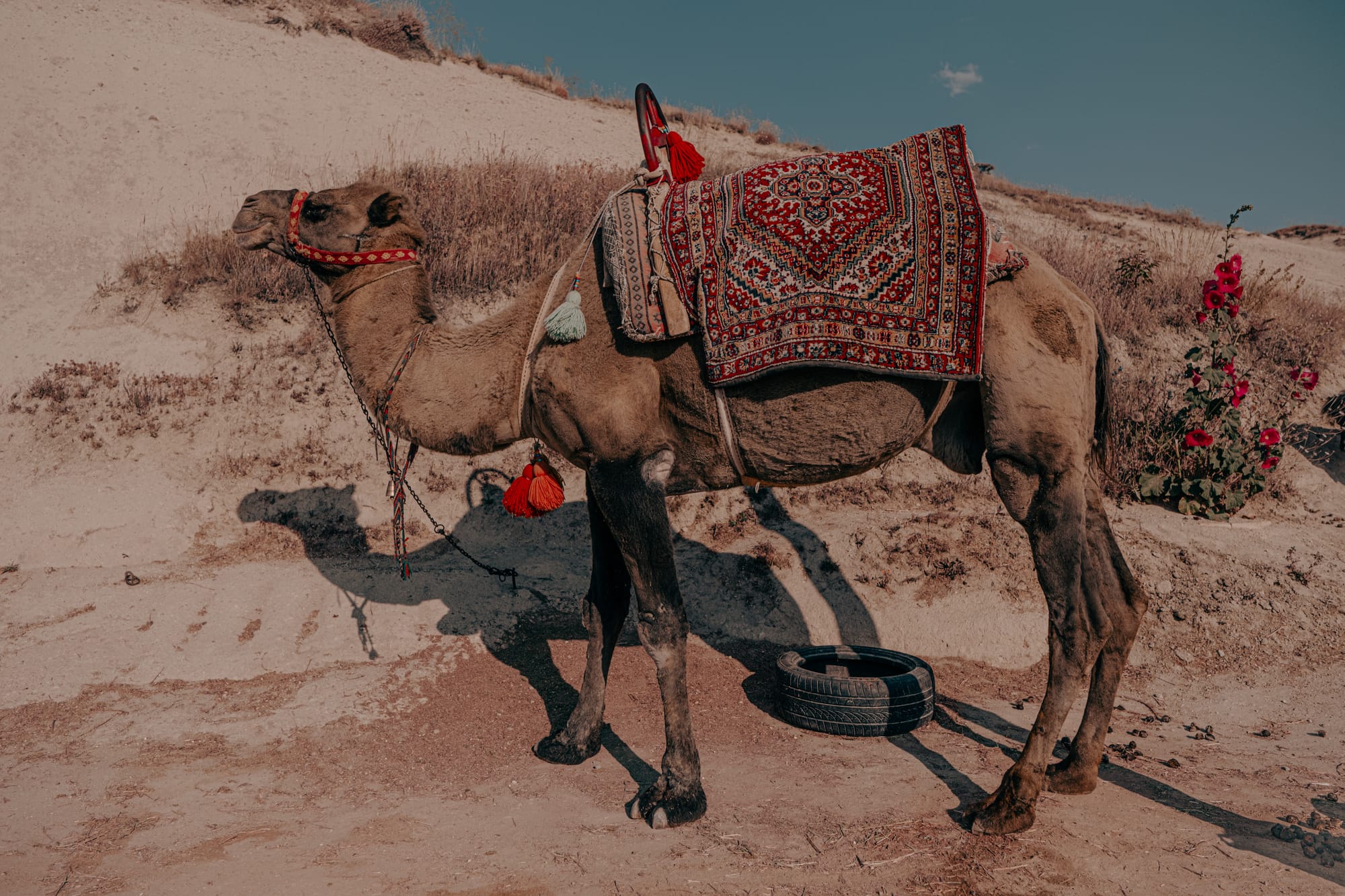
Decoratively saddled camels rest and stand along a dusty Cappadocian roadside
Wildflowers lined many stretches of the trail, adding splashes of red, yellow, and white against the neutral rock. Insects buzzed lazily in the warm air, and the scent of sun-warmed earth was ever-present. A tall spike of crimson hollyhocks stood like a sentinel at one curve of the path, its blossoms stacked in a perfect vertical rhythm.
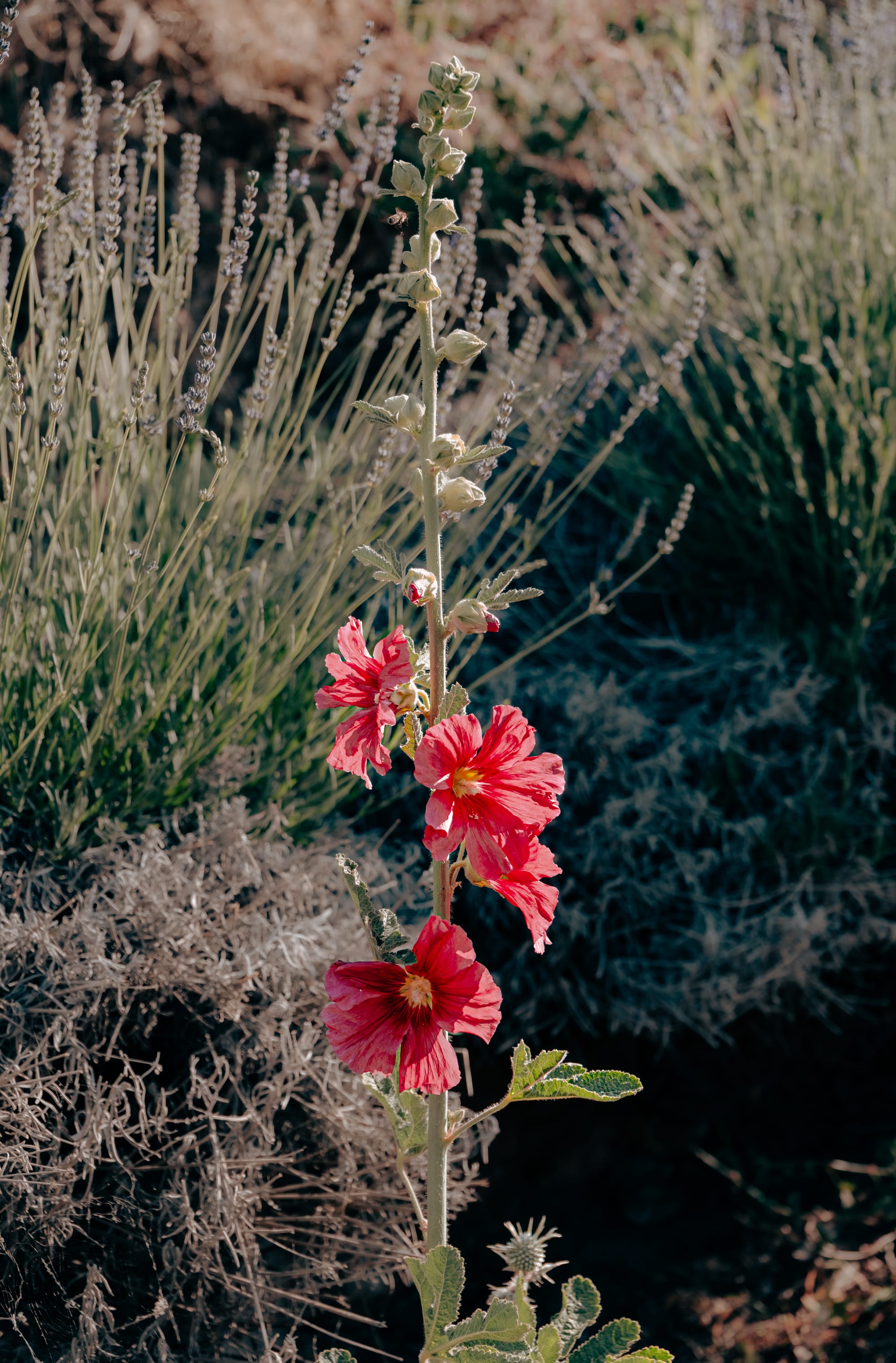
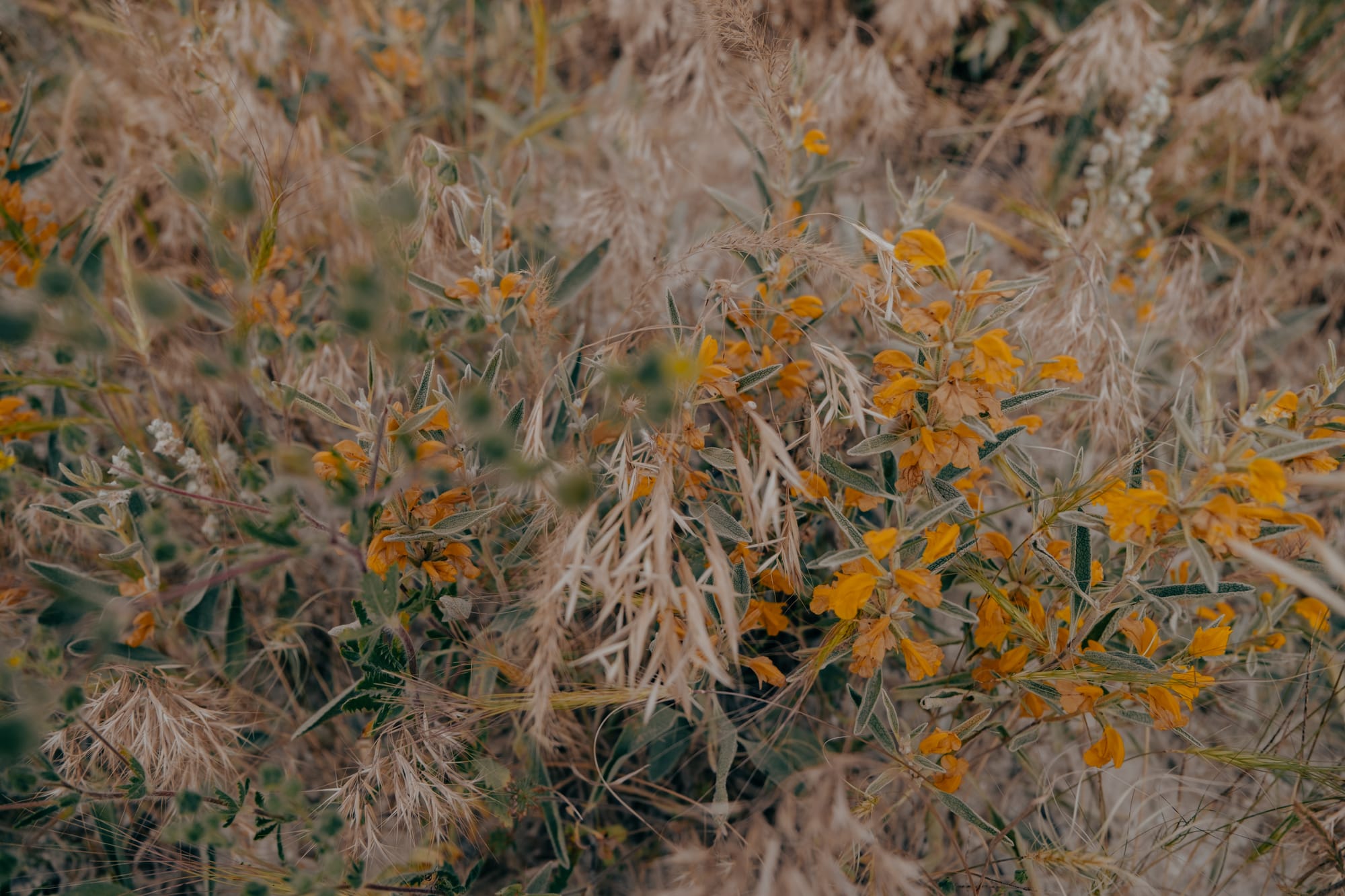
Wild hollyhocks and clusters of yellow blooms brighten the trails of Cappadocia
Şamil’s knowledge of the seasonal rhythms of the valleys enriched the hike.
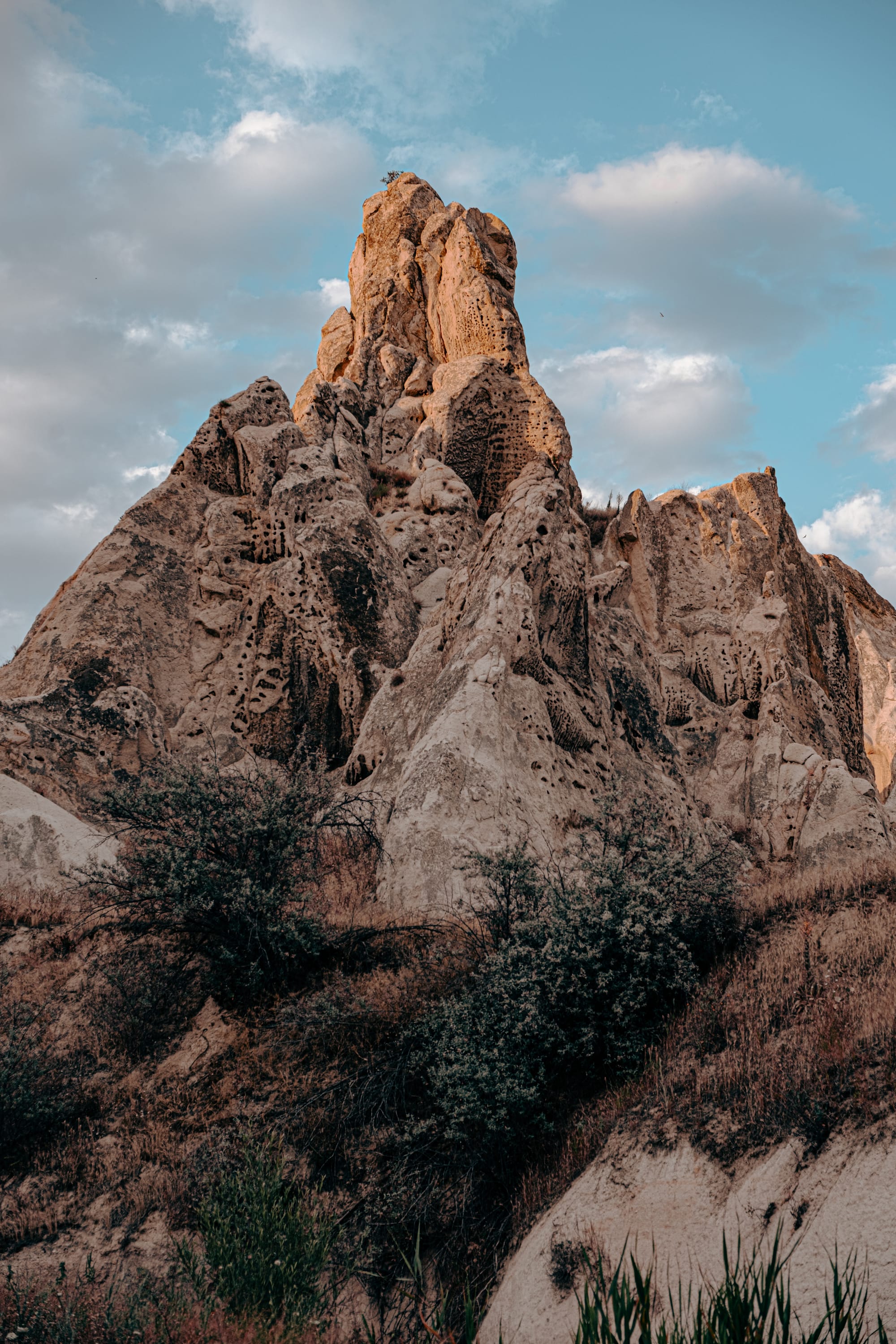
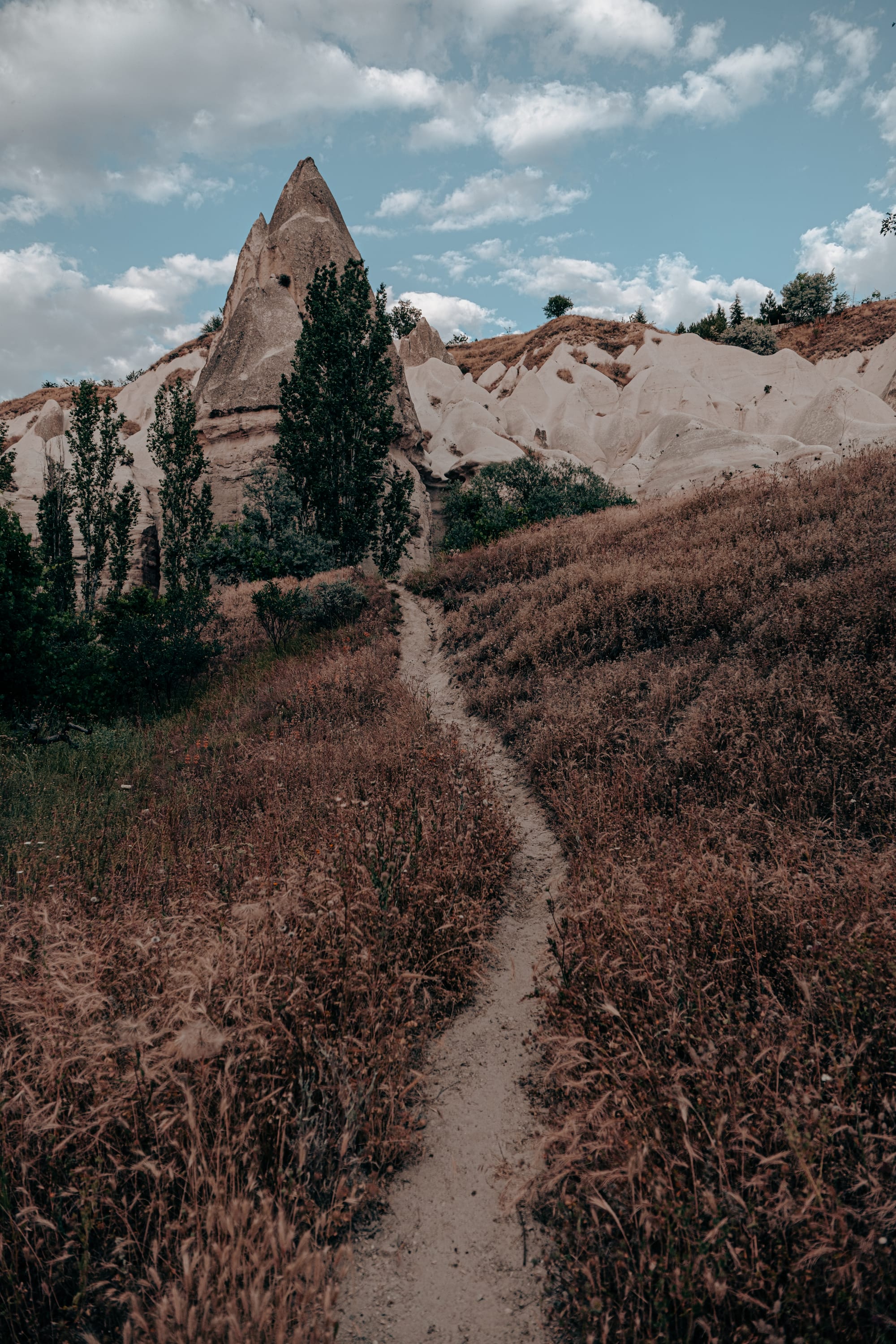
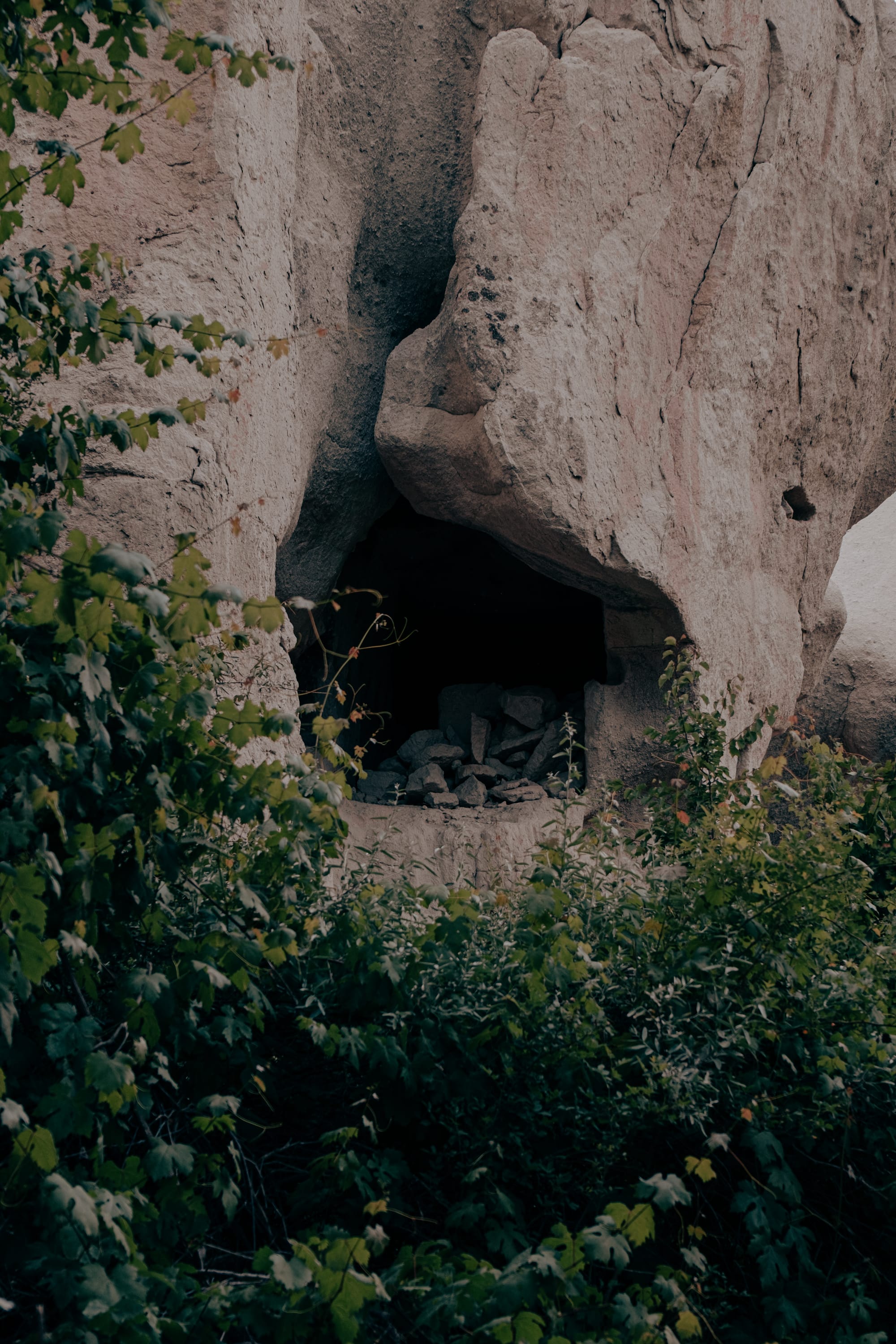
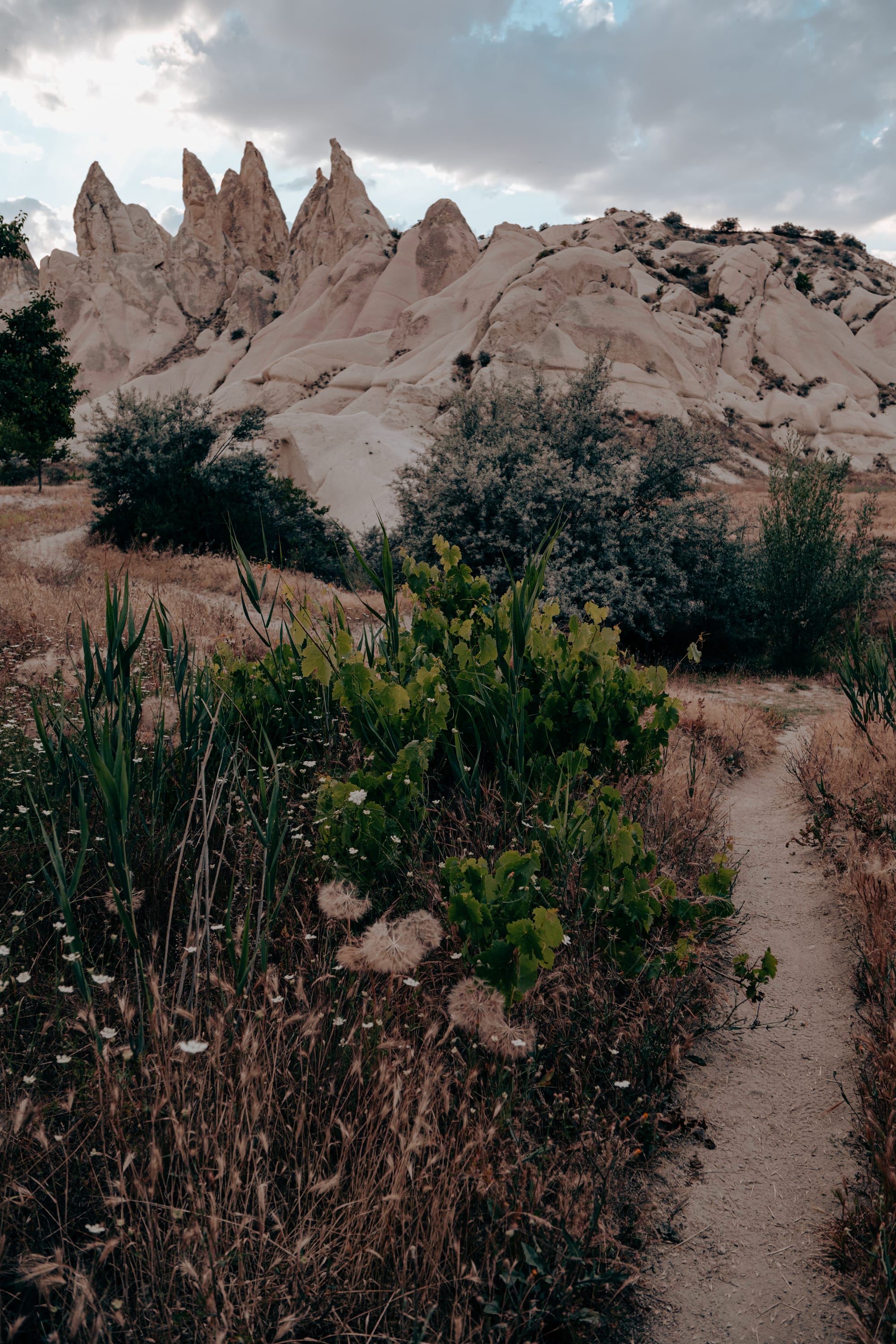
A hollowed rock opening and a winding trail through green and golden foliage
He was able to point out edible plants, like grape leaves, as we hiked along.
Why you should go with a guide
One of the most important takeaways from our hike is the value of having a knowledgeable local guide. The paths between these valleys are not always clearly marked, and it would be easy to get turned around without someone who knows the way. Şamil not only kept us on track but also shared history, geology, and cultural insights that we would have missed entirely on our own.
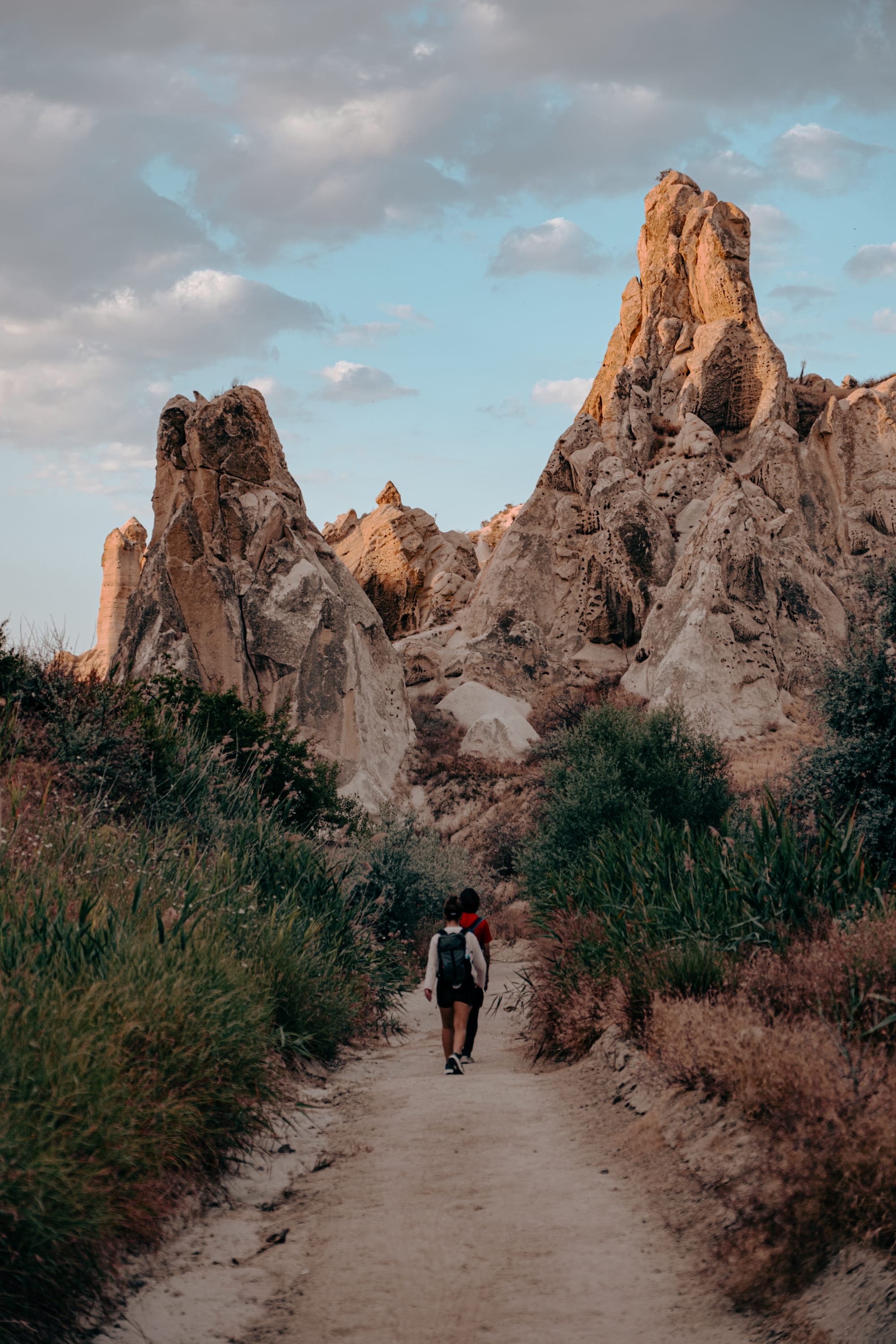
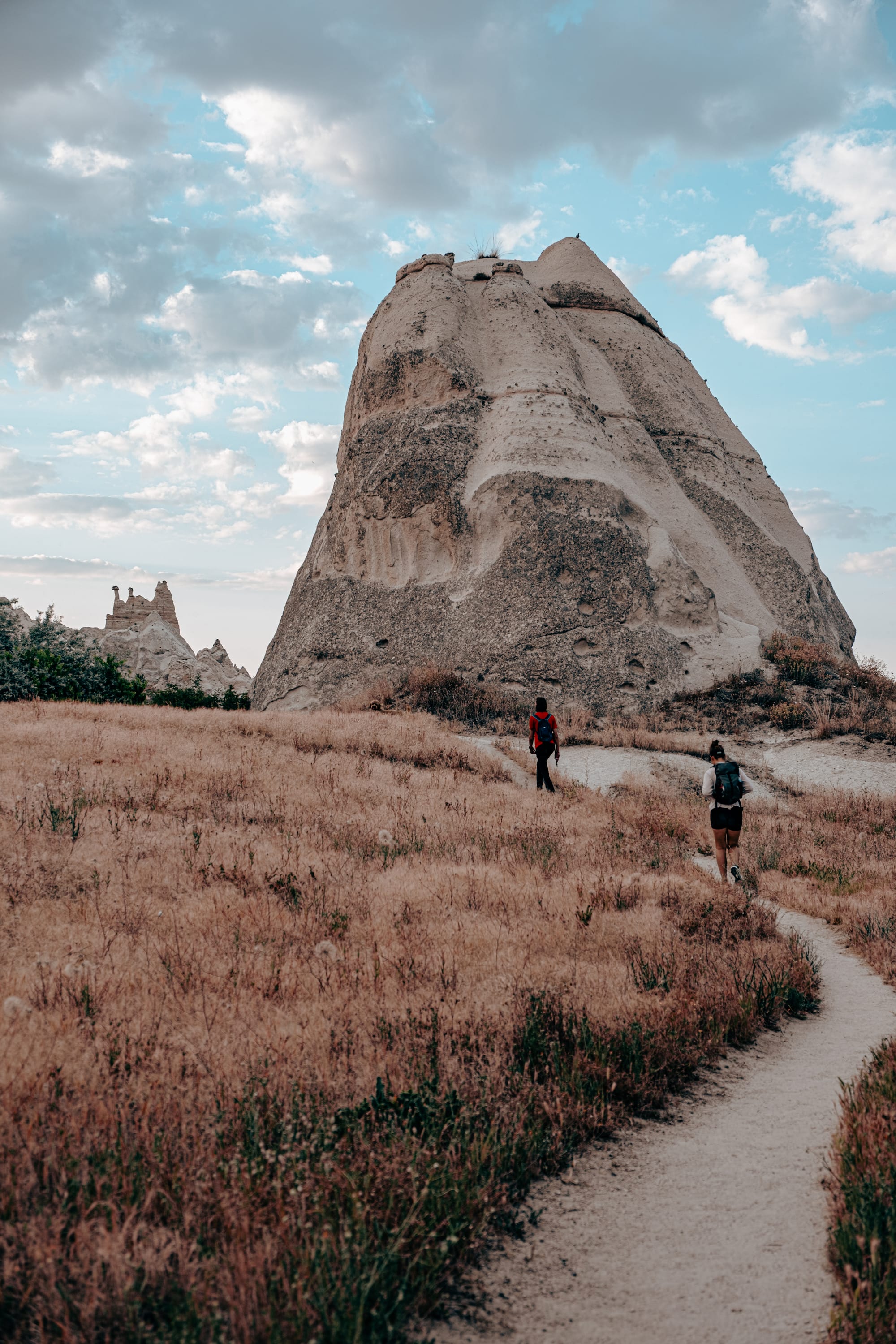
Hiking through winding trails framed by Cappadocia’s dramatic rock spires
A guide can also help you pace the day properly, ensuring that you arrive at key viewpoints at the right time for the best light—like our perfectly timed arrival in Love Valley for sunset.
Practical advice for the hike
If you plan to take on the Pigeon–White–Honey–Love Valley route, it’s worth preparing for a day that blends both leisure and challenge. The terrain shifts from soft sand to rocky ascents, so sturdy footwear is a must.
Above all, consider hiring a local guide—both for safety and for the invaluable perspective they bring to the land’s history, ecology, and hidden wonders.
A day to remember
Our guided hike through Pigeon, White, Honey, and Love Valleys was a journey through four distinct landscapes, each with its own beauty and character.
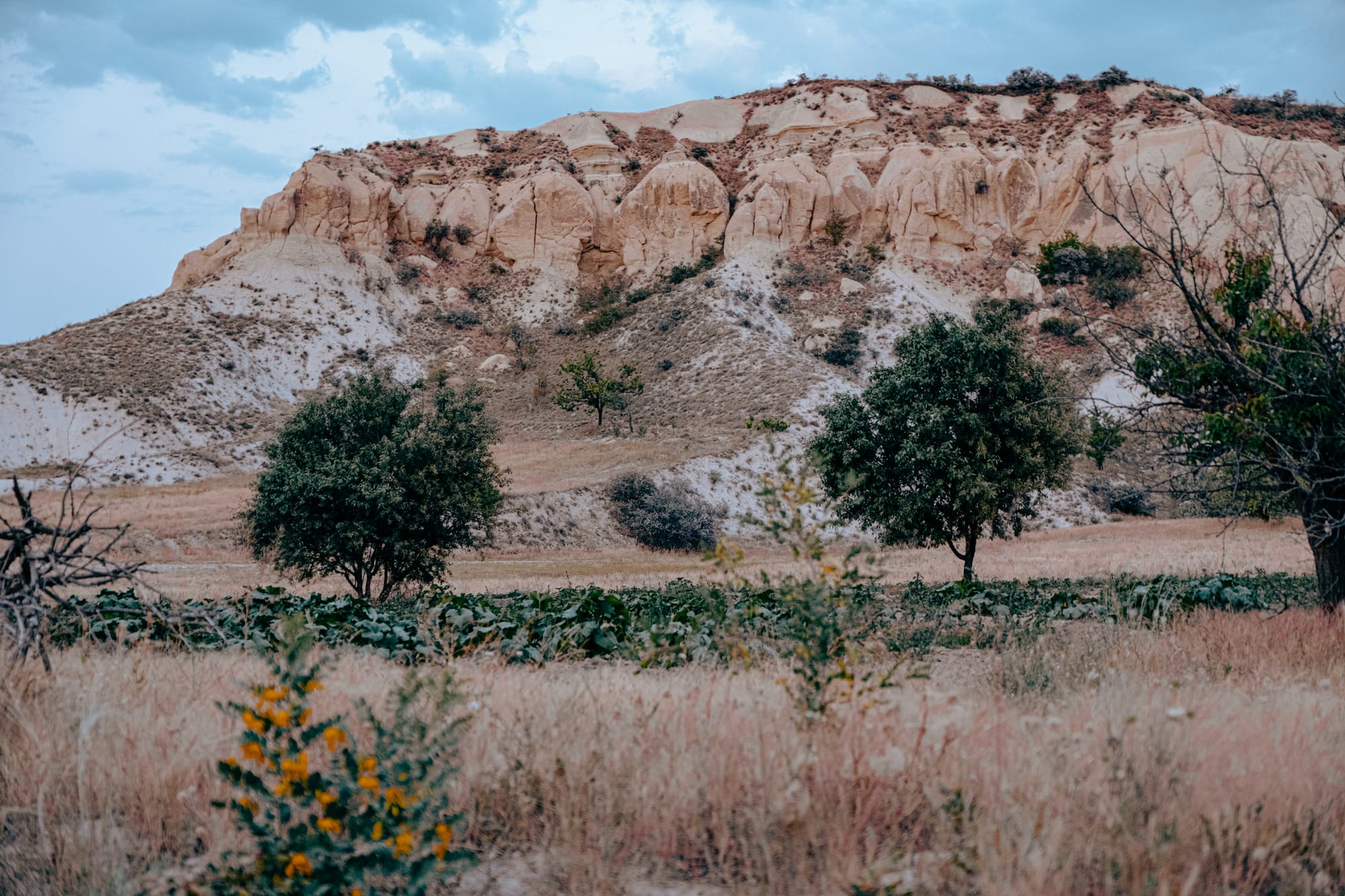
From the historic pigeon houses to the pure white cliffs, the golden warmth of Honey Valley, and the playful shapes of Love Valley, the day was filled with moments that will stay with us forever.
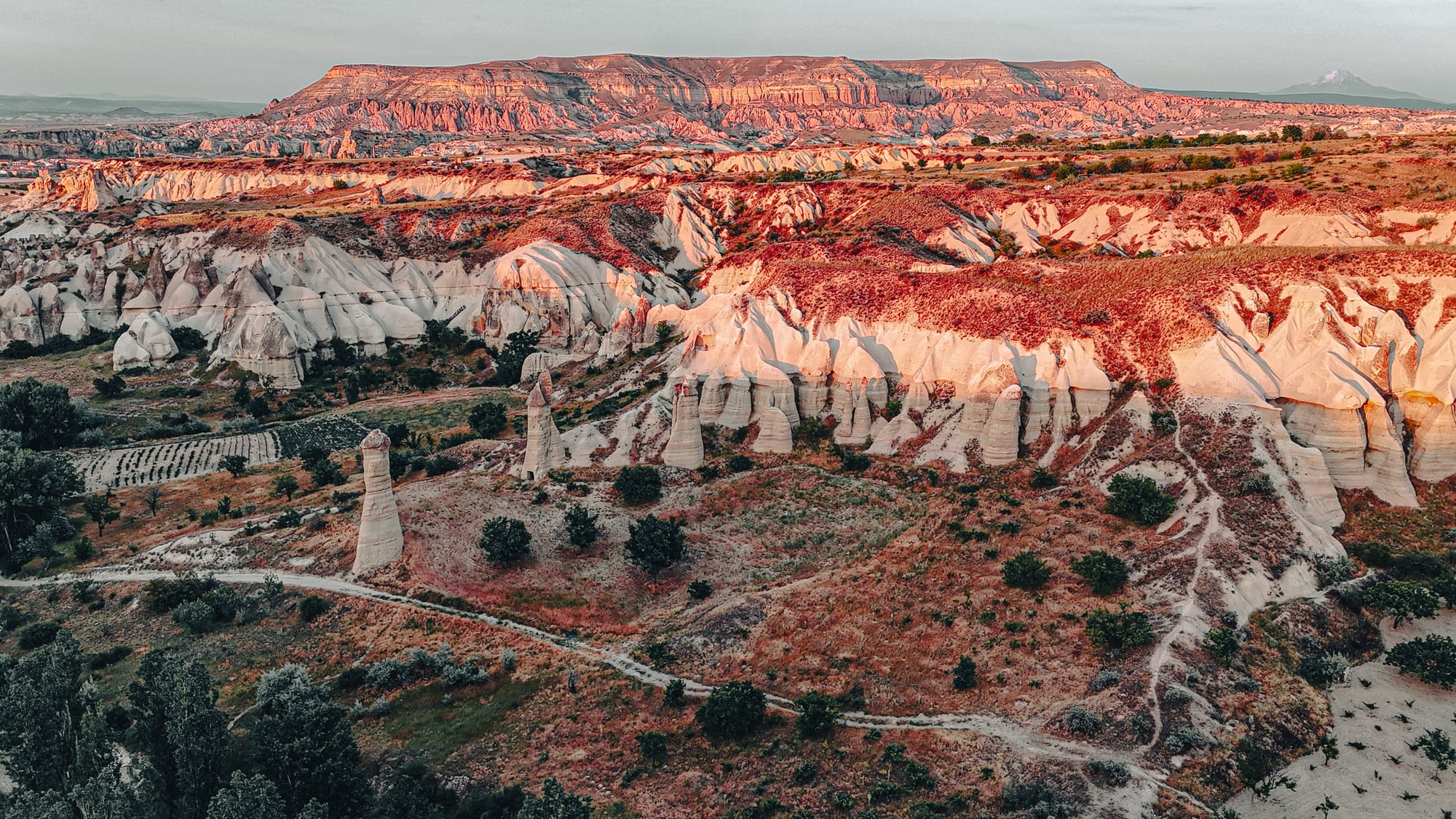
If you’re visiting Cappadocia, we can’t recommend this hike enough. It’s not just about the scenery—it’s about experiencing the land with someone who knows it intimately, who can share its secrets and stories. And when you finally see the sunset, you’ll understand why this is one of the most magical places on Earth.






